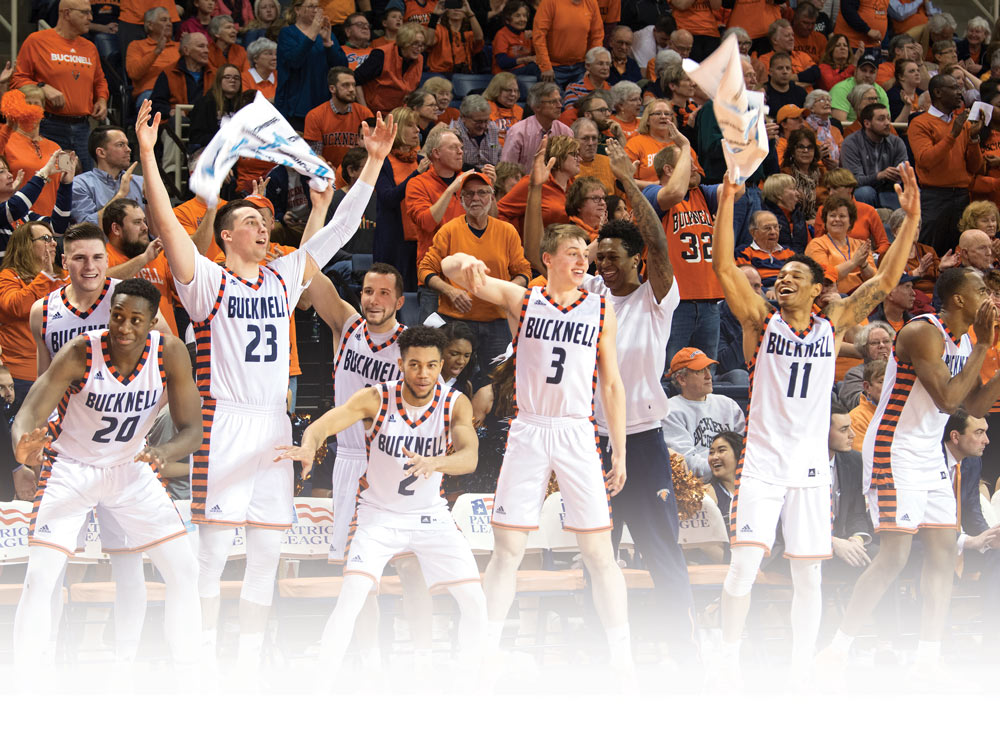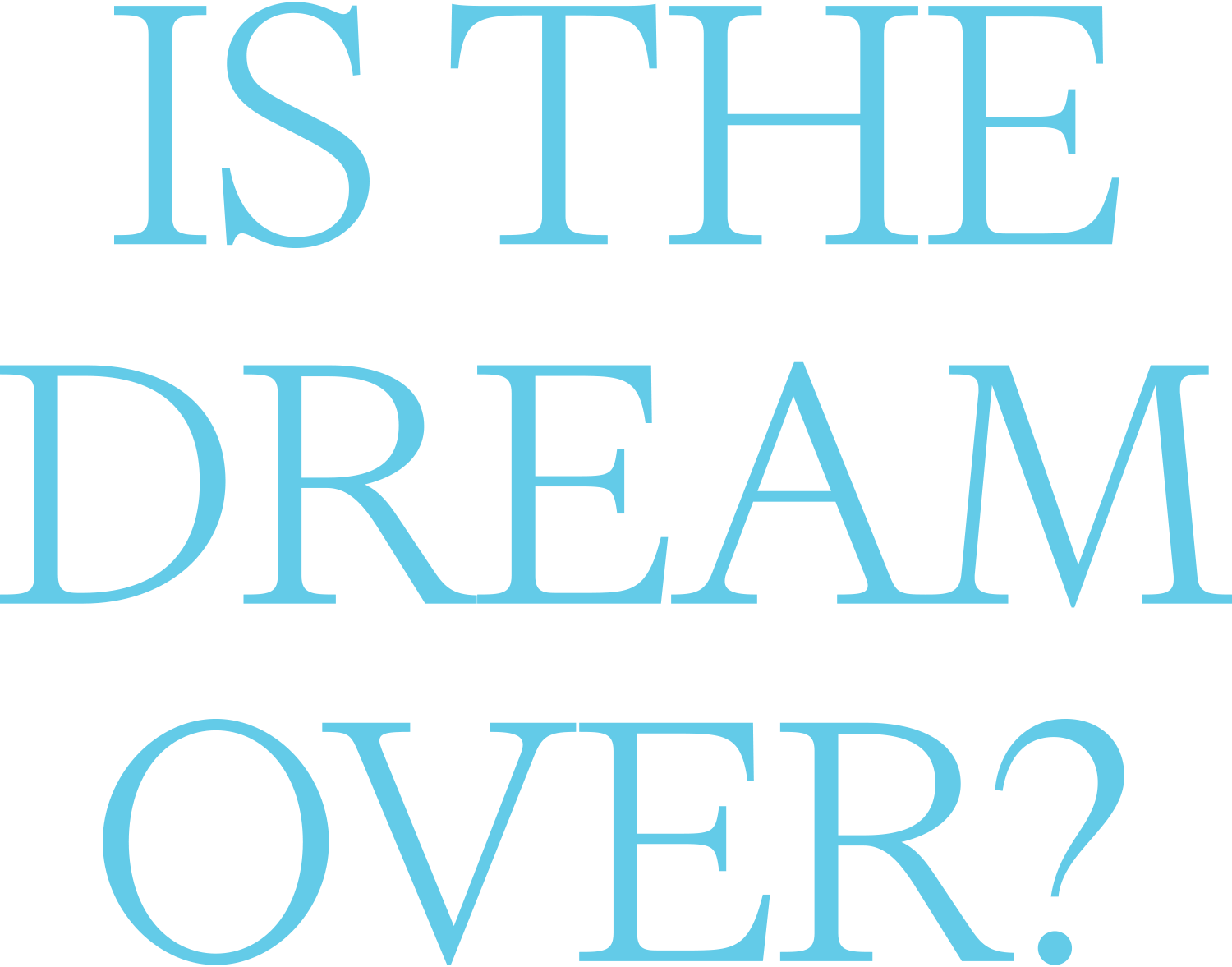Catch some late-spring beauty by coming to Reunion, May 31 — June 3.
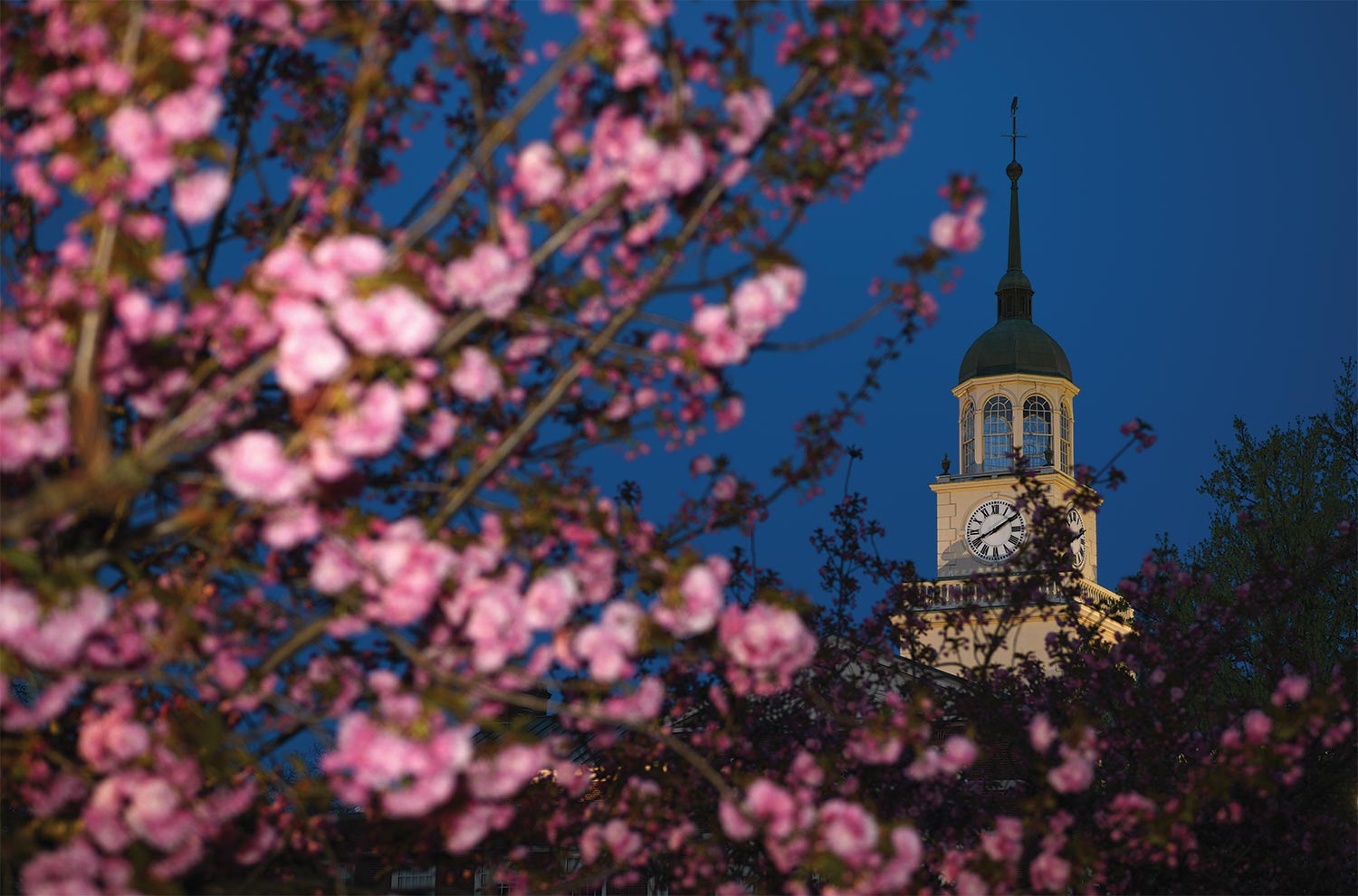
Catch some late-spring beauty by coming to Reunion, May 31 — June 3.

by Sherri Kimmel
If you call Dave Sayer ’59 a dream maker, he’ll correct you: “People make their own dreams, then we answer their prayers.”
For 36 years, he’s been the leader of the Publishers Clearing House (PCH) Prize Patrol, showing up at lucky sweepstakes winners’ front doors with bouquets of roses and balloons, a sunny smile and a great-big cardboard check.
“I’m truly blessed having a job where you’re always welcome — I’m never turned away,” says Sayer.
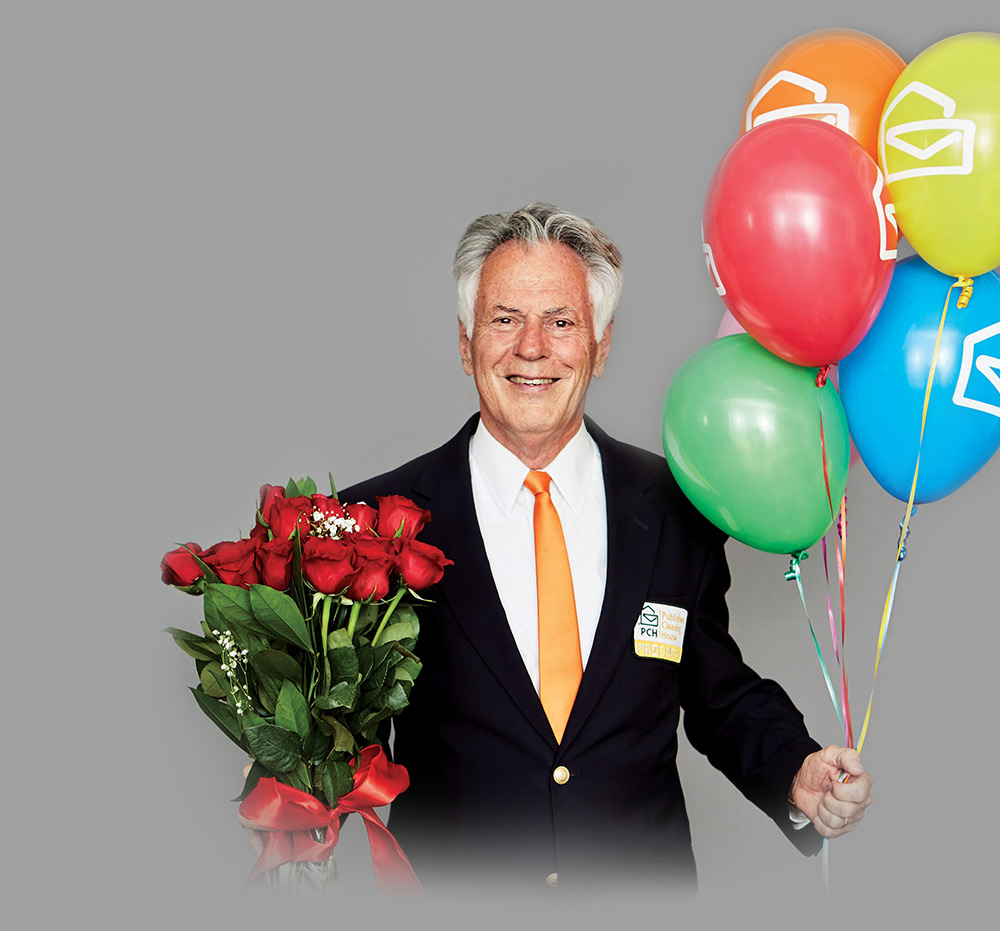

If you call Dave Sayer ’59 a dream maker, he’ll correct you: “People make their own dreams, then we answer their prayers.”
For 36 years, he’s been the leader of the Publishers Clearing House (PCH) Prize Patrol, showing up at lucky sweepstakes winners’ front doors with bouquets of roses and balloons, a sunny smile and a great-big cardboard check.
“I’m truly blessed having a job where you’re always welcome — I’m never turned away,” says Sayer.
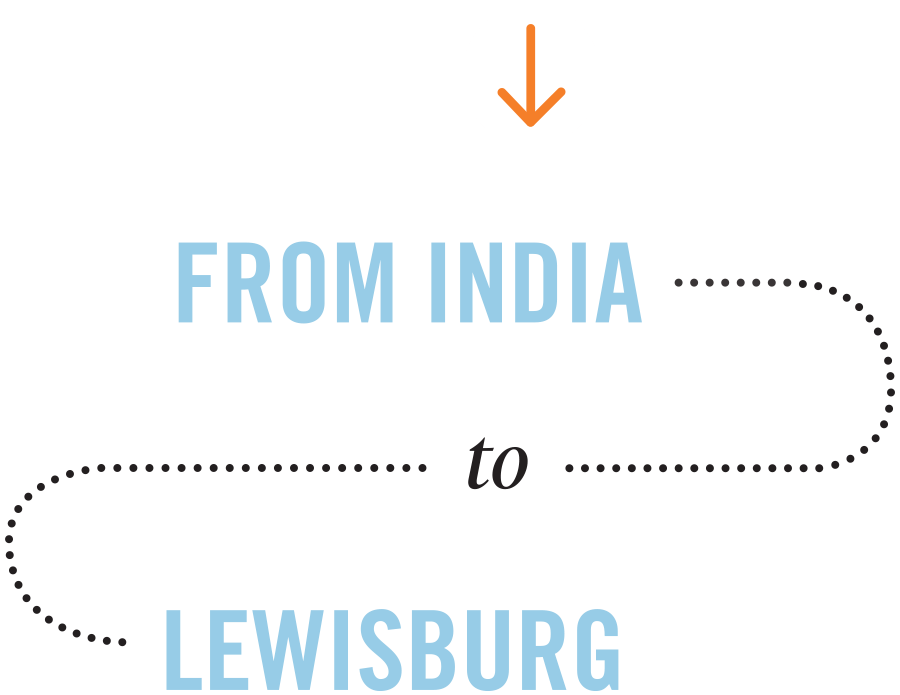
by SUSAN LINDT
“It was a heart-wrenching experience,” she says. “It made me think about the futility of war and what it does to families. I wondered why we couldn’t fight a border dispute without loss of life.”
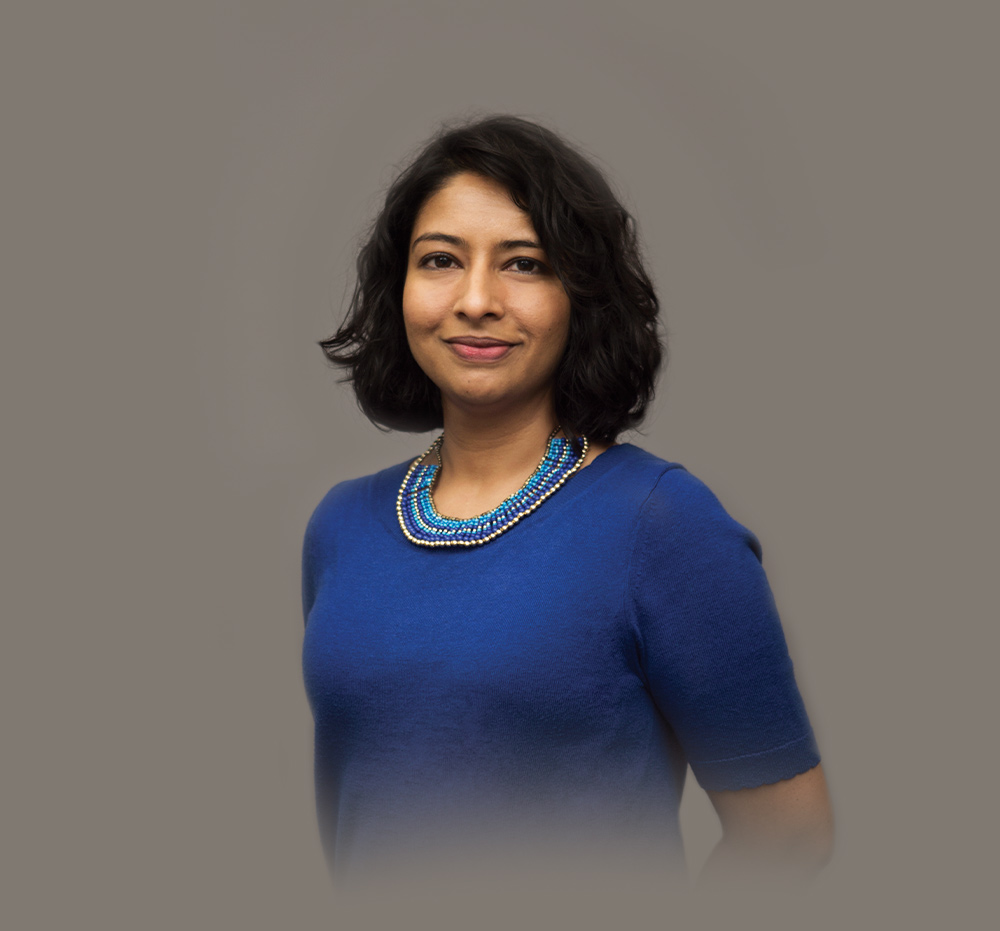

Before she was a Bucknell political science professor, Soundarya Chidambaram was interning at a newspaper in her native New Delhi. It was the haunting sight of body bags — the aftermath of a border dispute between Pakistan and India — that made her question the big picture.
“It was a heart-wrenching experience,” she says. “It made me think about the futility of war and what it does to families. I wondered why we couldn’t fight a border dispute without loss of life.”
I really enjoy reading the new format of the Bucknell Magazine. It’s very visually pleasing, and the alumni stories and student stories really confirm all the good that Bucknell is doing in the world.
Bowie, Md.
Sarasota, Fla.
In the latest issue, I am sure there are many interesting stories from WWI. The ones picked for publication were interesting as far as they went and the other pages of mostly pictures and snippet information. The five people researched on Page 23 probably all had great back stories, but you chose not to tell them.
The Pop Quiz seems silly; the article about the students’ trip to Belgium and France seemed superficial; the article on water and war not complete enough to be interesting.
Sorry to not be able to be wildly enthusiastic about the new look. I am sure it is a work in process.
Moraga, Calif.
Bucknell football prepped Matt Tallman ’02 for his role in Rise.
River Vale, NJ
Congratulations to you, the staff and those who developed the content.
Cary, N.C.
Baltimore, Md.
I served in the Army and felt very proud, and would do it again. It’s nice to see that college men and women discover other sides to a point of view.
Again, it is a terrific article, and I look forward to other informative articles. Keep up the good work.
Baltimore, Md.

magazine
Volume 11, Issue 2
Chief Communications Officer
Andy Hirsch
Editor
Sherri Kimmel
Design
Amy Wells
Associate Editor
Matt Hughes
Class Notes Editor
Heidi Hormel
Contributors
Mike Ferlazzo
Beth Kaszuba
Brad Tufts
Heather Johns
Emily Paine
Editorial Assistants
Shana Ebright
Kathryn Nicolai ’20
Julia Stevens ’20
Website
bucknell.edu/bmagazine
Contact
Email: bmagazine@bucknell.edu
Class Notes:
classnotes@bucknell.edu
Telephone: 570-577-3611
Bucknell Magazine
(ISSN 1044-7563), of which this is volume 11, number 2, is published in winter, spring, summer and fall by Bucknell University, One Dent Drive, Lewisburg, PA 17837. Periodicals Postage paid at Lewisburg, PA and additional mailing offices.
Permit No. 068-880.
Circulation
57,000
Postmaster
Send all address changes to:
Office of Records,
301 Market St., Suite 2
Bucknell University, Lewisburg, PA 17837
© 2018 Bucknell University
Please recycle after use.

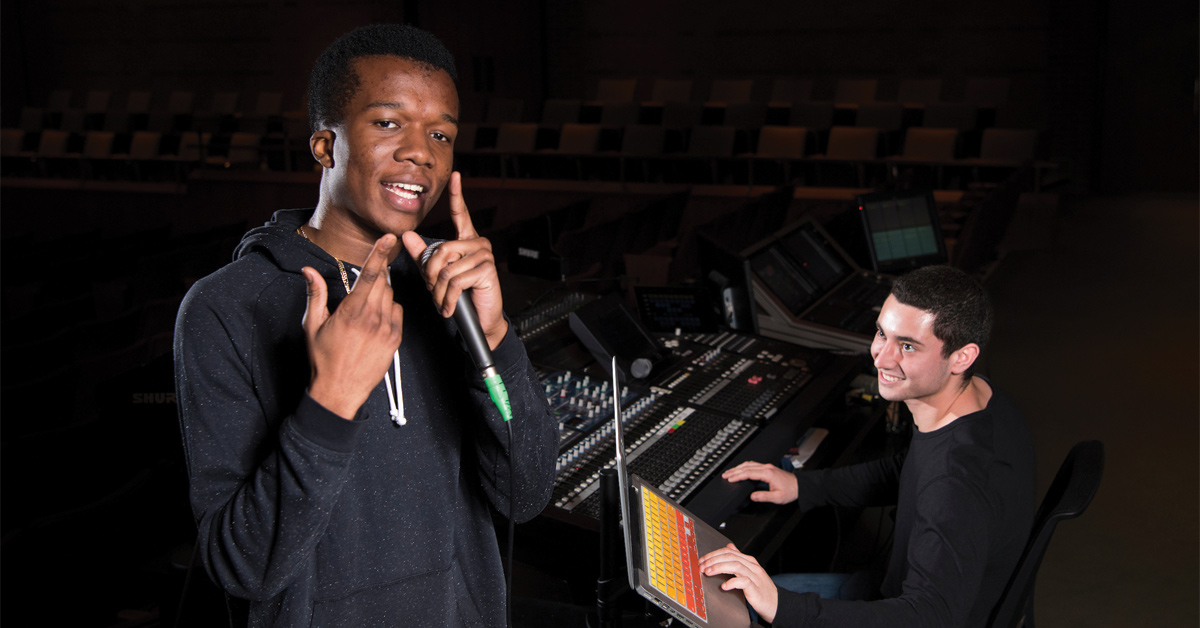
Caleb Krohn ’20 didn’t plan to start a record label. It was love of hip-hop that drew Krohn to musician Kwaku “Mansa K” Amponsah ’19, who’d recently taken an expensive leap to arrange his residence hall room for recording.
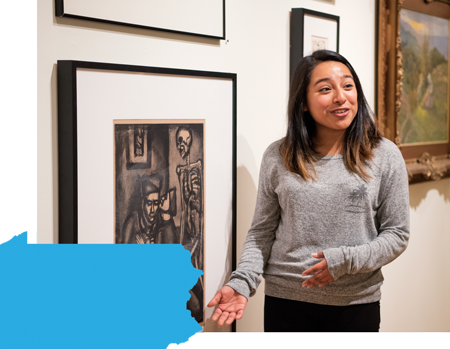

 Samek Art Museum, Lewisburg
Samek Art Museum, LewisburgGoing to museums with her dad was part of growing up for Neyda Francisco ’19. In high school, she became a volunteer docent at the Natural History Museum of Los Angeles County. So, when the anthropology and political science double major and Posse Scholar saw that the Samek Museum was looking for student guides, she applied.
Now, Public Programs and Outreach Manager Emily Izer is helping Francisco and 10 other guides learn how to do original object research and create a conceptual tour, so they can share the depth of the Samek’s 6,000-object permanent collection more widely.


 205 Courtland Place, Asheville, N.C.
205 Courtland Place, Asheville, N.C.
Tears streamed down the face of Christine Martens ’07. Forcing herself not to peer into the valley several thousand feet below, she plunged ahead along the steep, snowy terrain of Washington’s Cascade Mountains. It was July 2014, and Martens and her husband, John Haffner, were less than two weeks into their thru-hike of the 2,650-mile Pacific Crest Trail (PCT), which traverses the western U.S. from Canada to Mexico.
What She’s Doing:
Martens scaled back her career as an instrumentation engineer to part time so she could work with Blue Ridge Hiking Company in North Carolina, guiding trekkers on day hikes and longer excursions.



The 78,000-square-foot facility — a bold blend of traditional and contemporary architectural elements — will benefit departments across the College of Engineering and serve as a new home for the Department of Education. Together with Academic West, the social sciences building that opened in 2013, Academic East will complete a new quadrangle behind Bertrand Library, opening to the South Campus Apartments living-learning complex, slated for completion in fall 2019.
A mathematics professor since 1999 who chaired the department from 2008 until 2012, Voss was offered the position following a national search.
With research interests in partial differential equations, applied mathematics and complex analysis, Voss sees an advantage in applying his mathematical expertise to the complexities of such a diverse college.
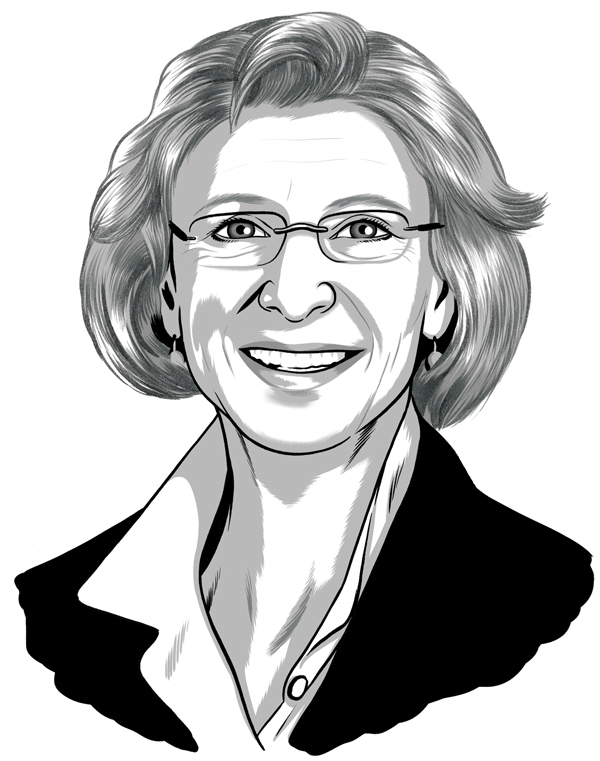

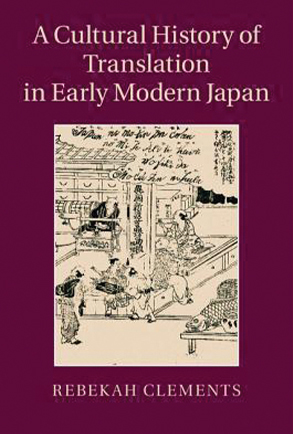
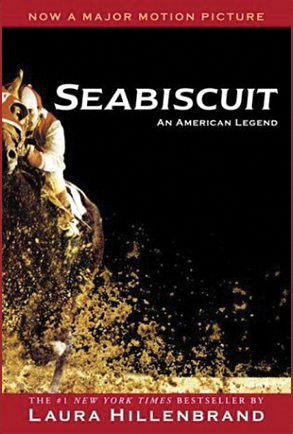


This is a sweet and poignant novel originally written in German and translated into English, but the setting and all cultural references are Japanese. The two main characters discover each other by chance, and an unexpected relationship grows between them.

This subject has been under-researched and ignored up until now. Clements does the entire East Asian studies community a good turn by addressing the notion of translation during a period in Japan’s history when translation meant: 1) supreme effort to understand (not always successfully) Western concepts that were being introduced at warp speed to a previously cloistered Japan; 2) the creation and coining of terms in Japanese for concepts, like democracy, new to the culture and language; and 3) propagation of these ideas and concepts to the entire nation and the subsequent political ramifications.

This is a re-read, but such a good one. Hillenbrand’s narrative about one of the greatest race horses in American history is rich and well-researched. The passages in which she describes some of the races the horse ran are written so well that I was on the edge of my seat even though I knew the outcome, and it was a second read!
I have read every issue of this magazine since 1979. It is a staple in my literary diet. Need I say more?

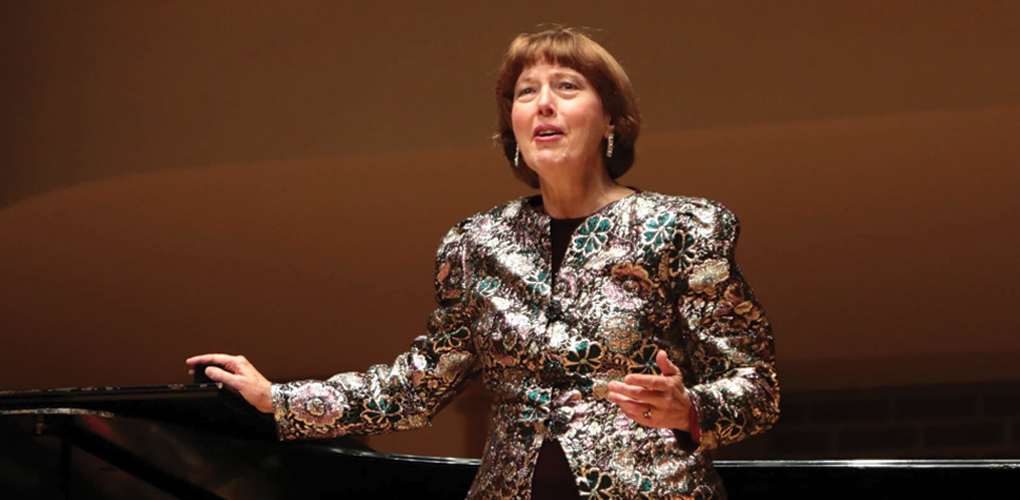
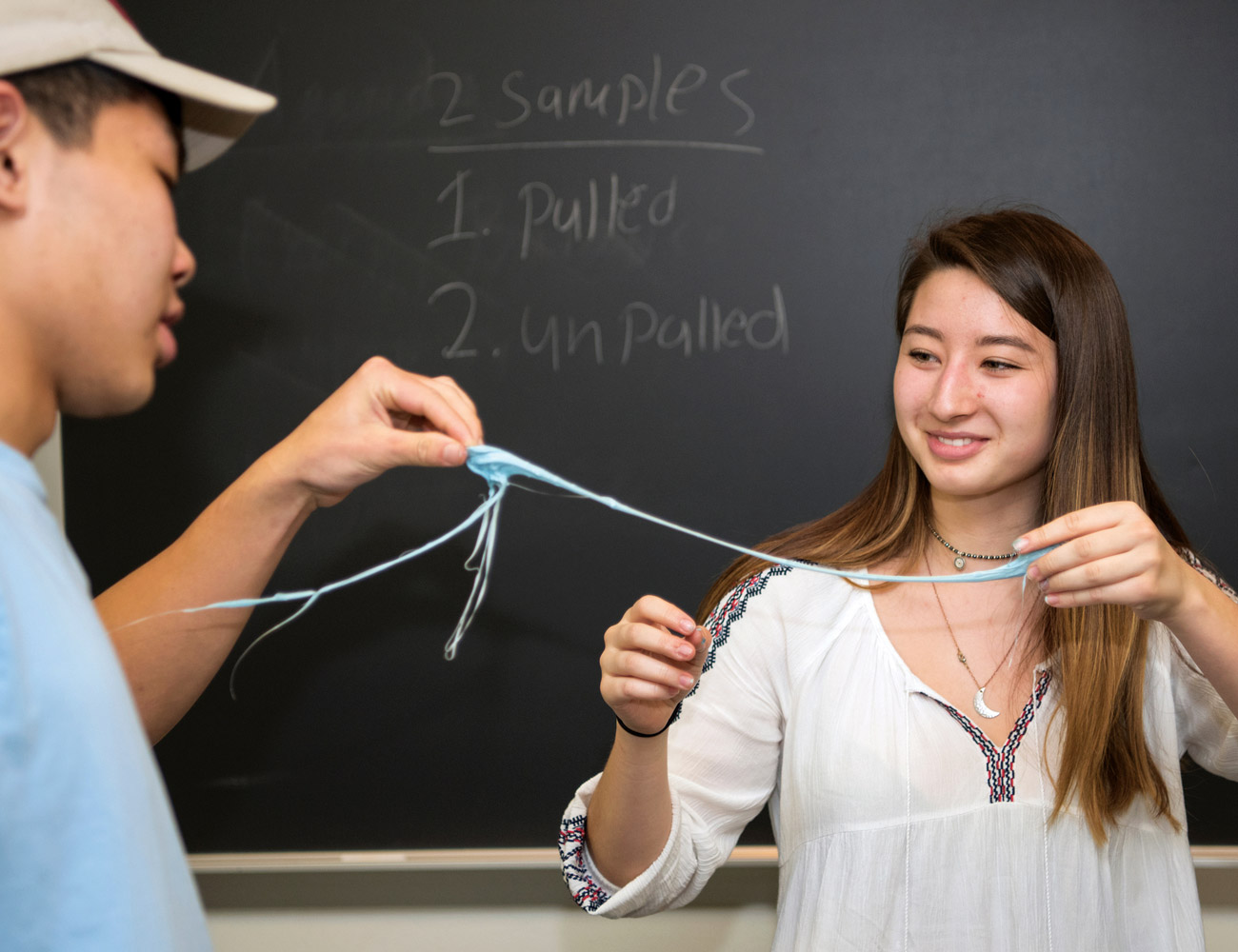


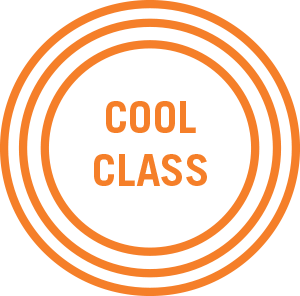
What’s Cookin’

What’s Cookin’

On the trek to his degree, Thomas has worked on a dual-injection syringe used for patients with atrial fibrillation to restore natural heart rhythm. This spring, the native of Frederick County, Md., will complete an article on the device that he hopes to get published.
As part of his senior design course, Thomas and classmates are designing a product to stabilize the heart during a coronary-artery bypass graft. “We met with cardiologists, sat in on different surgeries, and tried to identify problem areas or things we could help improve — that’s the main goal of the course,” he says.

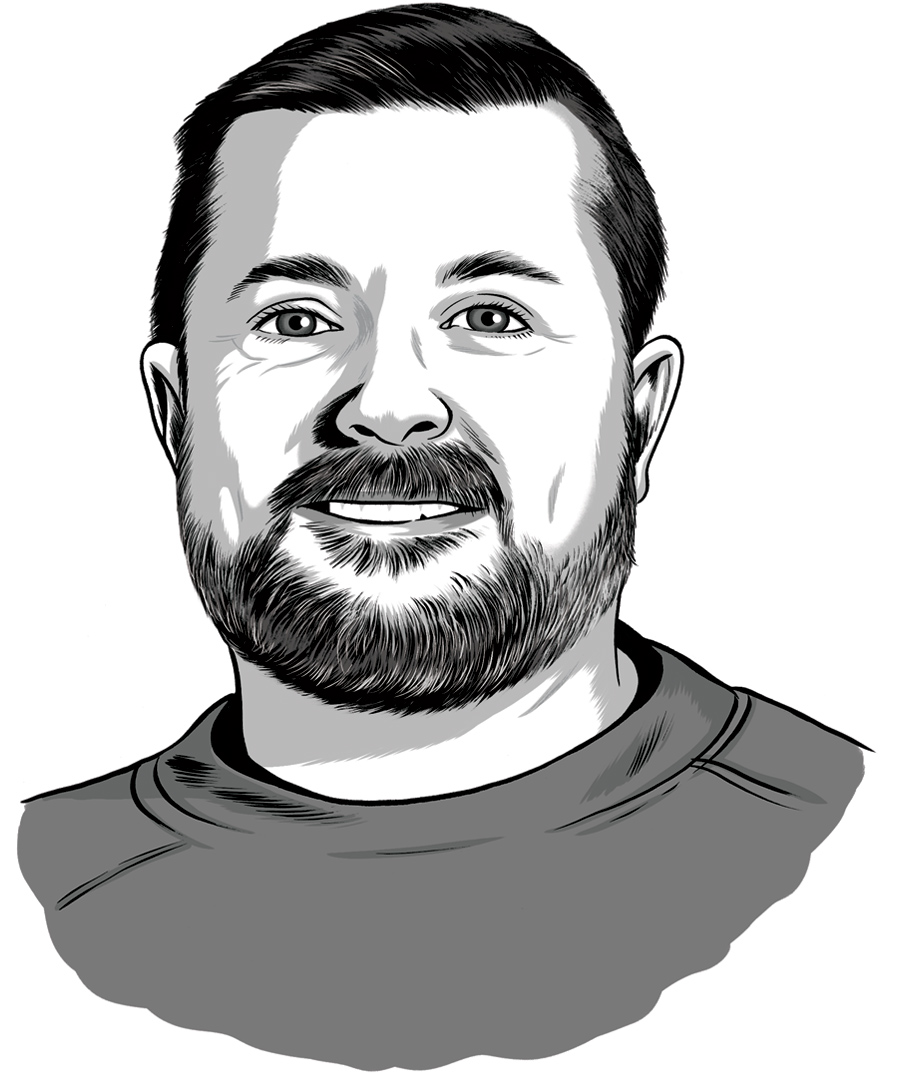
 For 17 years, Jerry Shreck has been Bucknell’s strength and conditioning coach. With three full-time assistants he oversees all 27 varsity teams, and he directly trains seven: baseball, men’s lacrosse, men’s soccer, men’s and women’s swimming and diving, men’s basketball and wrestling. He shares his tips for the average person interested in staying fit.
For 17 years, Jerry Shreck has been Bucknell’s strength and conditioning coach. With three full-time assistants he oversees all 27 varsity teams, and he directly trains seven: baseball, men’s lacrosse, men’s soccer, men’s and women’s swimming and diving, men’s basketball and wrestling. He shares his tips for the average person interested in staying fit.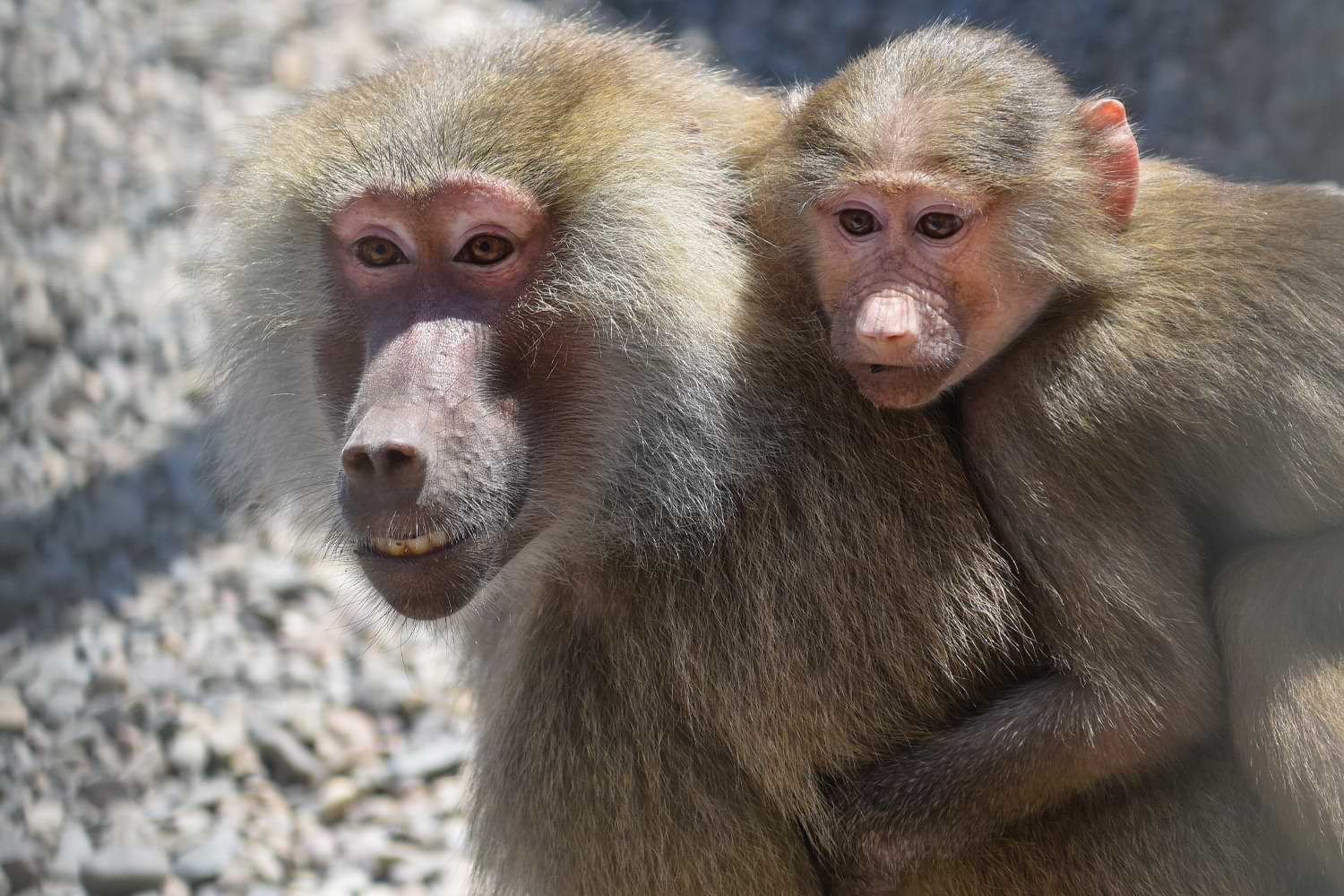

ack in 1968, psychology professor Doug Candland walked into the office of then-University president Charles Watts with an unusual request: to build a 40-by-40-foot cage near the athletic fields to house his troop of baboons. Without a blink, says Candland, Watts replied, “Sure, how much do you need?” Soon after, Candland began working with maintenance staff to convert a prefabricated barn into a primate wonderland of water spouts and trapezes.
Around the same time, Candland received an irresistible offer from another primatologist to house five Japanese snow monkeys, the first ever to enter the U.S. “I went back to the poor president and said, ‘Actually I need two cages,’ ” Candland remembers. “I recall the look on his face, which said, ‘What are you getting me into?’ ”
A half-century later, the answer to that question is clear, as Bucknell celebrates the 50th anniversary of one of the premier animal behavior programs in the country. Only a handful of colleges offer a degree in animal behavior for undergraduates, and none have Bucknell’s variety of primate species. Currently there are four: lion-tailed macaques, hamdryas baboons, brown capuchins and squirrel monkeys. The program also works with other beasties, including rats, salamanders, frogs, bees and chickens.

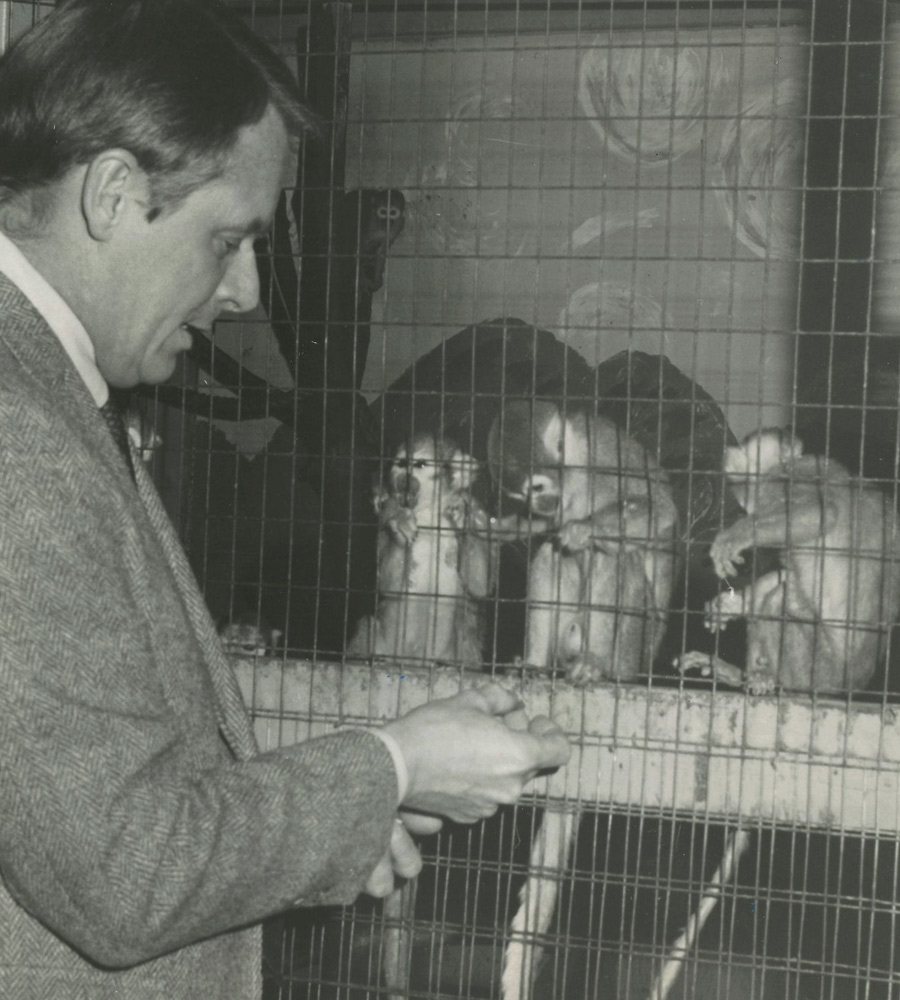


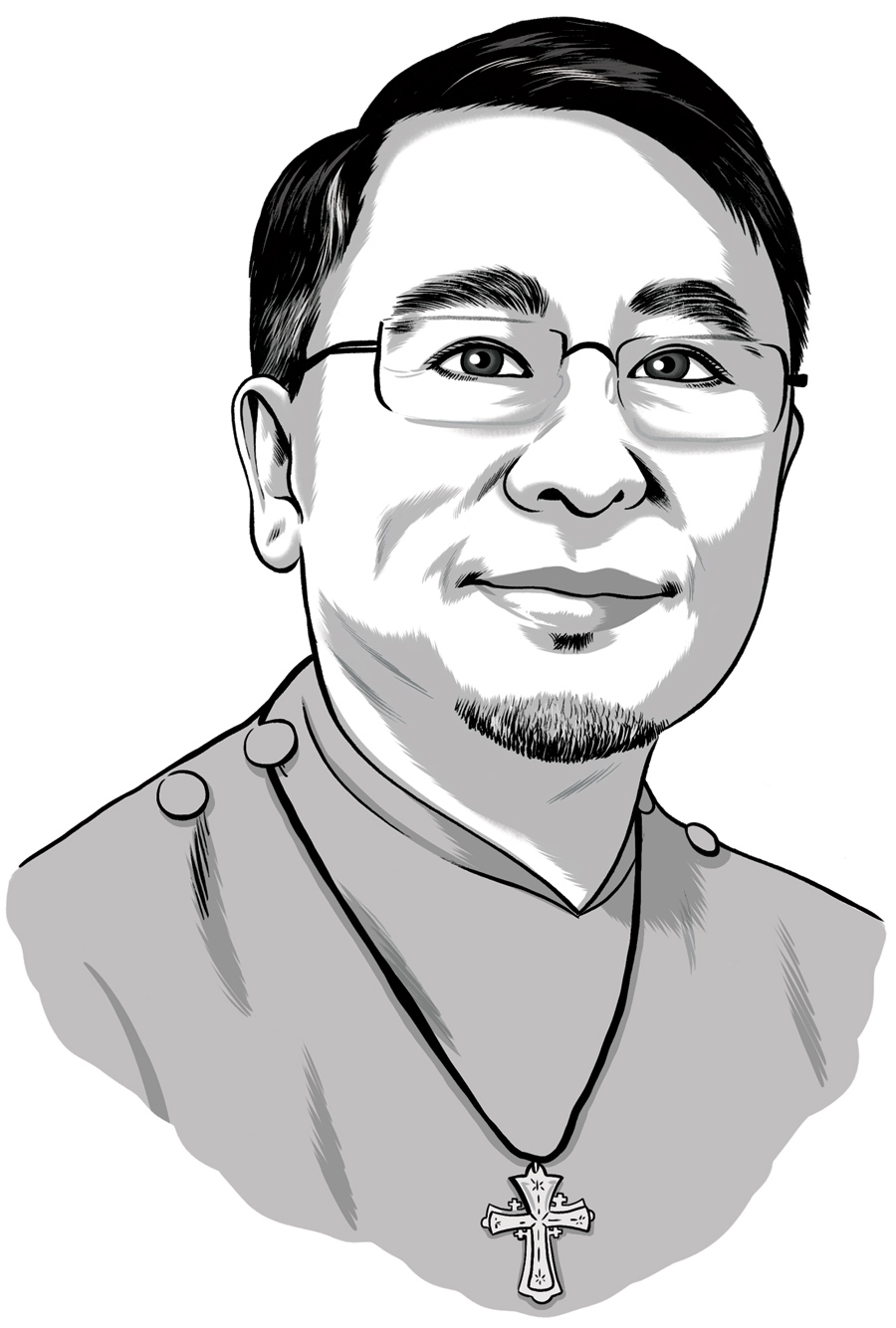
Until a few years ago, Mark Salvacion ’86 was a successful corporate attorney, working at Prudential, PNC Bank, Vanguard and other powerhouse companies. But the work left him feeling unsatisfied, so he made a move he’d been dreaming of for years: He quit his job and went back to school to become a United Methodist pastor. We spoke with him about his journey to the ministry.
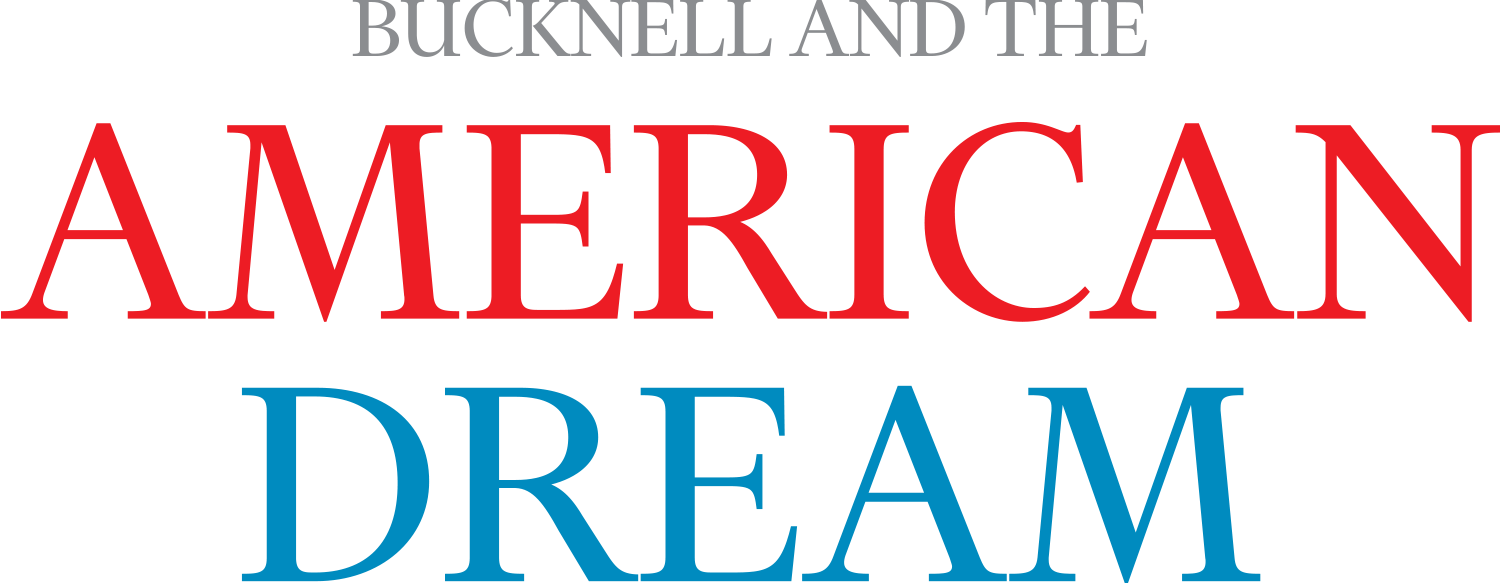
photographs by dustin fenstermacher
In 1991, when Bucknell held a four-day campus-wide colloquy on the state of the American Dream, the organizers started with the premise that the dream was “Sweet for Some; Sour for Others.” According to a flier found in the University archives, the many questions the colloquy posed included, “Is there a pervasive American Dream at Bucknell? Is it elitist? How does it fit in with the nation as a whole? Are there different American dreams for blue- and white-collar workers, the unemployed, the disabled, prison inmates, recent immigrants? Do men and women have different American dreams?”
The archives don’t offer much about the colloquy’s outcome. An article in The Bucknellian announced, “Colloquy meets with mixed success,” and mentions that “feminist football player” Jackson Katz drew the largest audience and attention. There was no mention of the keynote speech by journalist Richard Reeves, invited because he’d been traveling 15,000 miles across the U.S. asking about the American Dream. Much of the Bucknellian article dealt with grumbling that the student paper hadn’t supported the colloquy with advance information about events or covered follow-up discussion.
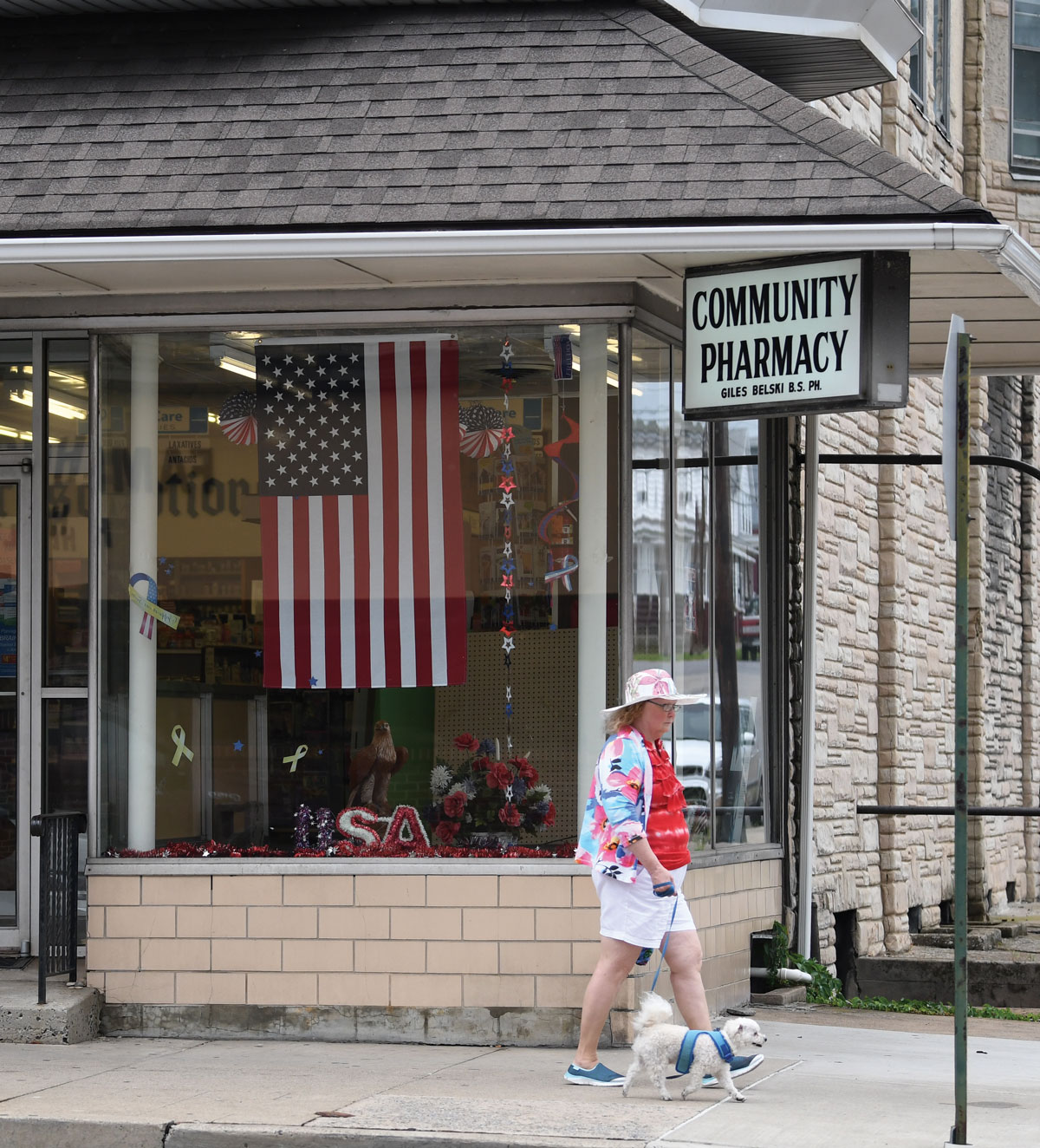
In 2013 and 2014, Melissa Rock, visiting professor of geography, asked her Bucknell cultural geography students to consider how American Dreams, plural, are shaped by the places people live, the sense of personal identity they have and the power they hold (or don’t hold) in society. The assignment, she says, was prompted by the Great Recession, when millions of people who were playing by the rules and pursuing the American Dream “saw the whole façade crumble.”
Her students each picked a topic to investigate, did field work and prepared podcasts on their findings.
Mike Lansing ’16 researched the views of gay college athletes. His conclusion: “In pursuit of the American Dream, people [in] the gay community hope for equal rights, getting a job and not having to fear getting fired because of their sexual orientation. They also want to have the feeling of acceptance, wherever they go. They want to feel they belong.”
In August 2018, Gabrijela Andric ’13 and Akmal Daniyarov ’12, M’14 will celebrate their wedding at Bucknell, a place they call home. While every story of couples who have met on campus is special, there are few that seem as improbable as this one — a European girl from Bosnia and Herzegovina and a Central Asian boy from Uzbekistan, growing up more than 2,000 miles apart, chose paths that led them to Bucknell and each other.
Growing up in a land wracked by war and economic crisis, Andric never imagined studying abroad. Daniyarov was equally skeptical. “My mom and dad were always dreaming about me studying abroad, and so was I,” says Daniyarov. “We would look at the cost, and it would quickly become unreal.”
Long before their paths would cross, they learned about the United World College (UWC) program, which invites students from around the world to apply to attend a UWC school for two years to complete a college- preparatory curriculum and learn about global leadership, intercultural understanding and sustainability. Competition is fierce, and neither Andric nor Daniyarov expected to be chosen. Making the cut changed their lives.
In pursing the American Dream, it helps to have certain advantages in life, many of which are beyond your immediate control. Like good parents. Or good health. Or attending good schools.
In the Public Broadcasting Service series Chasing the Dream, readers are invited to take a quiz that asks about their paths in life, including disadvantages they have overcome.
The lower the score, the more of a head start you got, and the closer you are to reaching the American Dream. And just for fun, your quiz results include a suggested soundtrack for your life.
Your intrepid investigating author got a score of 53 out of 100, which prompted the following assessment: “You’ve had so much working for you and only a few things holding you back.” Suggested soundtrack: rocker Joe Walsh’s “Life’s Been Good.”
– Matt Zencey
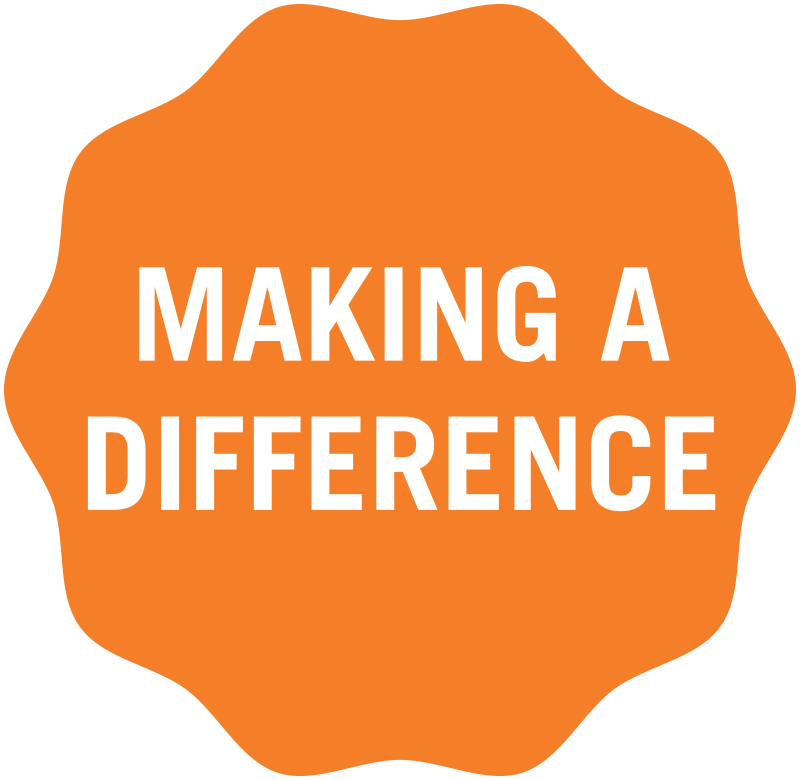
Limits
photographs by EMILY PAINE


Limits
photographs by EMILY PAINE

The office was formed four years ago and supplanted what was then referred to as the Office of Disability Services. The difference is notable: The office reports directly to Georgina Dodge, associate provost for diversity, equity & inclusion.
“That’s quite unique, compared to other institutions,” Accessibility Resources Director Heather Fowler says. “Bucknell sees my office as part of the University’s diversity plan. It’s a totally new feeling and take on the importance that Bucknell places on the office.”


n Oct. 1, a gunman opened fire on a crowd of people attending a country music festival in Las Vegas, killing 58 and injuring 851 people. It was the deadliest mass shooting committed by an individual in U.S. history. When Pete Griffin ’00 heard the horrific news, he knew that he had to respond. One week after the tragedy, he put together a group of musicians to visit survivors of the shooting in the hospital through Musicians On Call (MOC), the nonprofit for which he serves as president. The musicians — two of whom had been performers in the Route 91 Harvest music festival where the shooting occurred — shared both country songs and tears with the victims, their families and their caregivers in an emotional series of live, in-room concerts.
“It was by far one of the most powerful things I’ve ever seen in terms of music healing,” says Griffin. “These were people who were all music lovers, which was why they were at a music festival. But the last time they’d heard music, something terrible happened. So I think having the musicians play was really powerful for the patients and families because it brought them back to why they love music.”


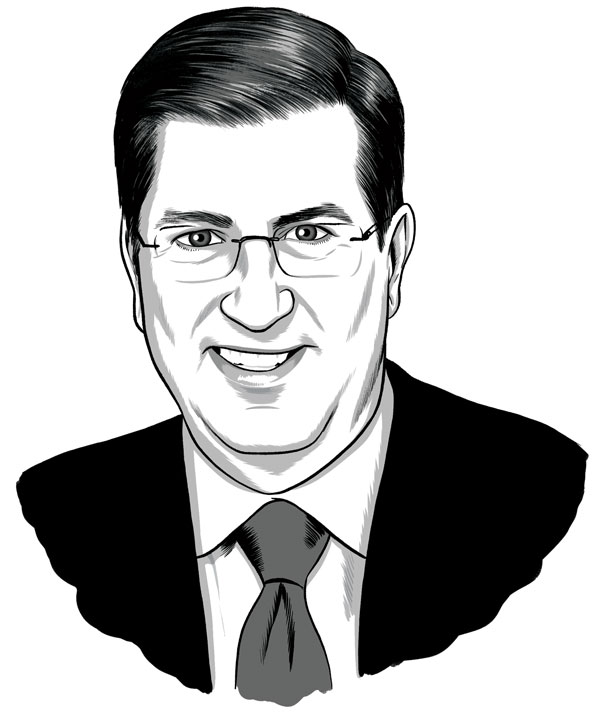
Our fully restored Campus Theatre — one of the few remaining single-screen art deco theatres in the country — presents visitors with a diverse mix of popular, art and independent films. Just across Market Street in downtown Lewisburg, our Samek Museum’s Downtown Gallery promotes encounters with art to the community and visitors alike.

Douglas Allchin ’79 addresses biological misconceptions in Sacred Bovines, whose title playfully modifies the familiar phrase for beliefs that go unchallenged. In 28 short essays, Allchin explores popular misunderstandings of science, delving into issues of sex and gender, evolution, human nature, genetic determinism, and politics and emotions in science.
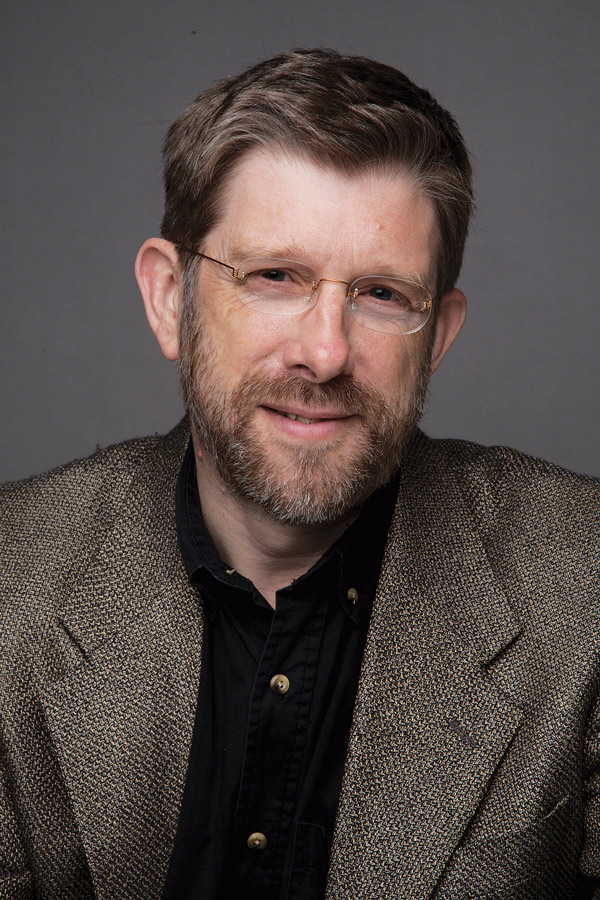

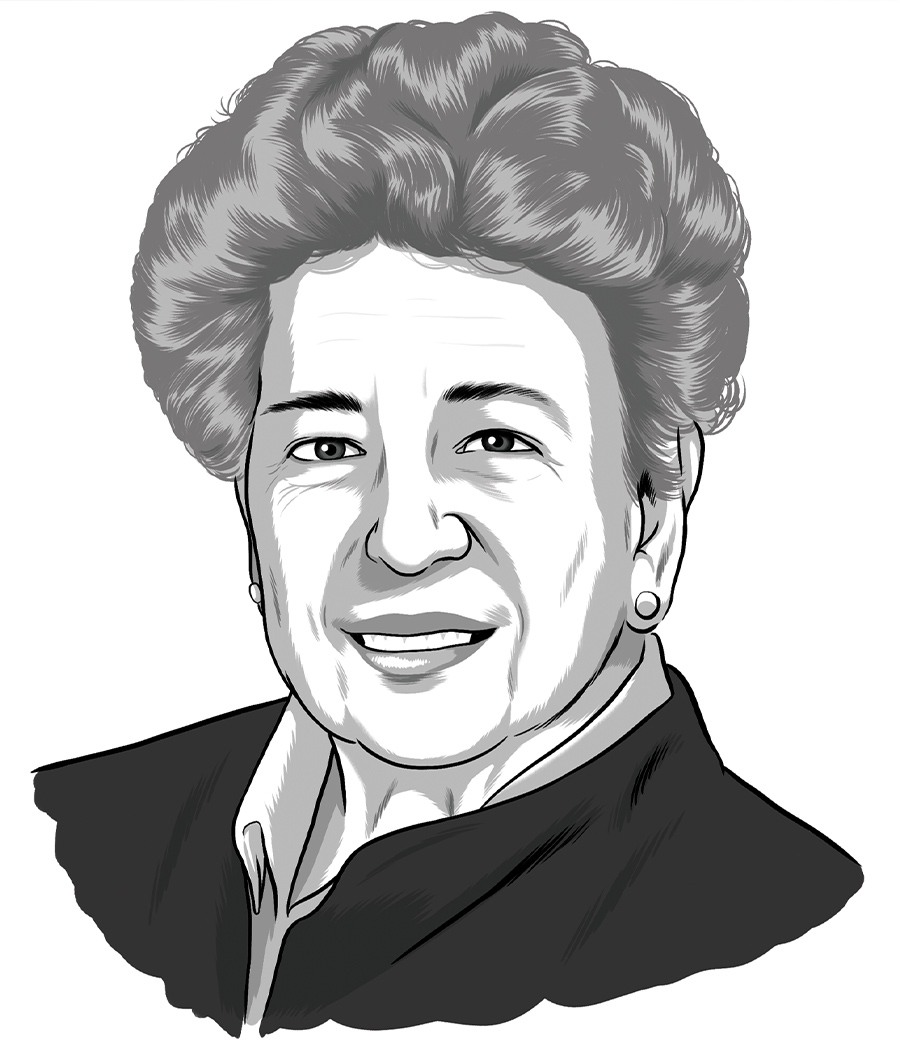
Fravel, the president and chief executive officer of the Breeders’ Cup, had little background in racing when he took the bit in his teeth. While working at a law firm in San Diego, he was given the legendary Del Mar racetrack as a client. In 1990, just eight years after earning his law degree at the University of Virginia, Del Mar’s board hired him as executive vice president. He advanced to president and CEO a decade later.
“I have always liked to be involved with things where people have fun, and racing is certainly one of those things,” says Fravel.
After 21 years at Del Mar, Fravel moved on to the Breeders’ Cup, promoting, marketing and putting on the series of high-purse championship races held each November at a different prestigious American thoroughbred track. This year’s races will occur occur Nov. 2–3 at Churchill Downs in Louisville, Ky. Fravel now commutes between San Diego and Lexington, where he supervises two dozen employees who work year-round to put on the festival-like event.
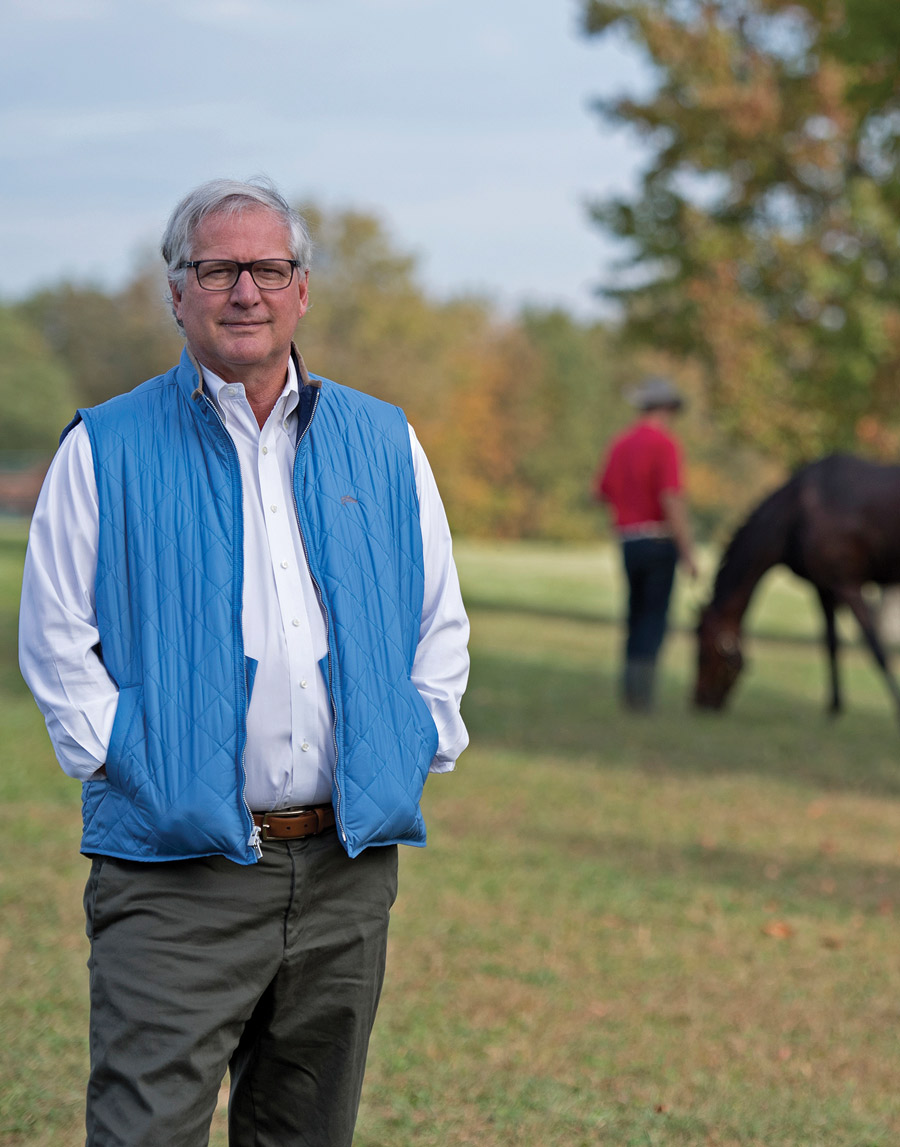
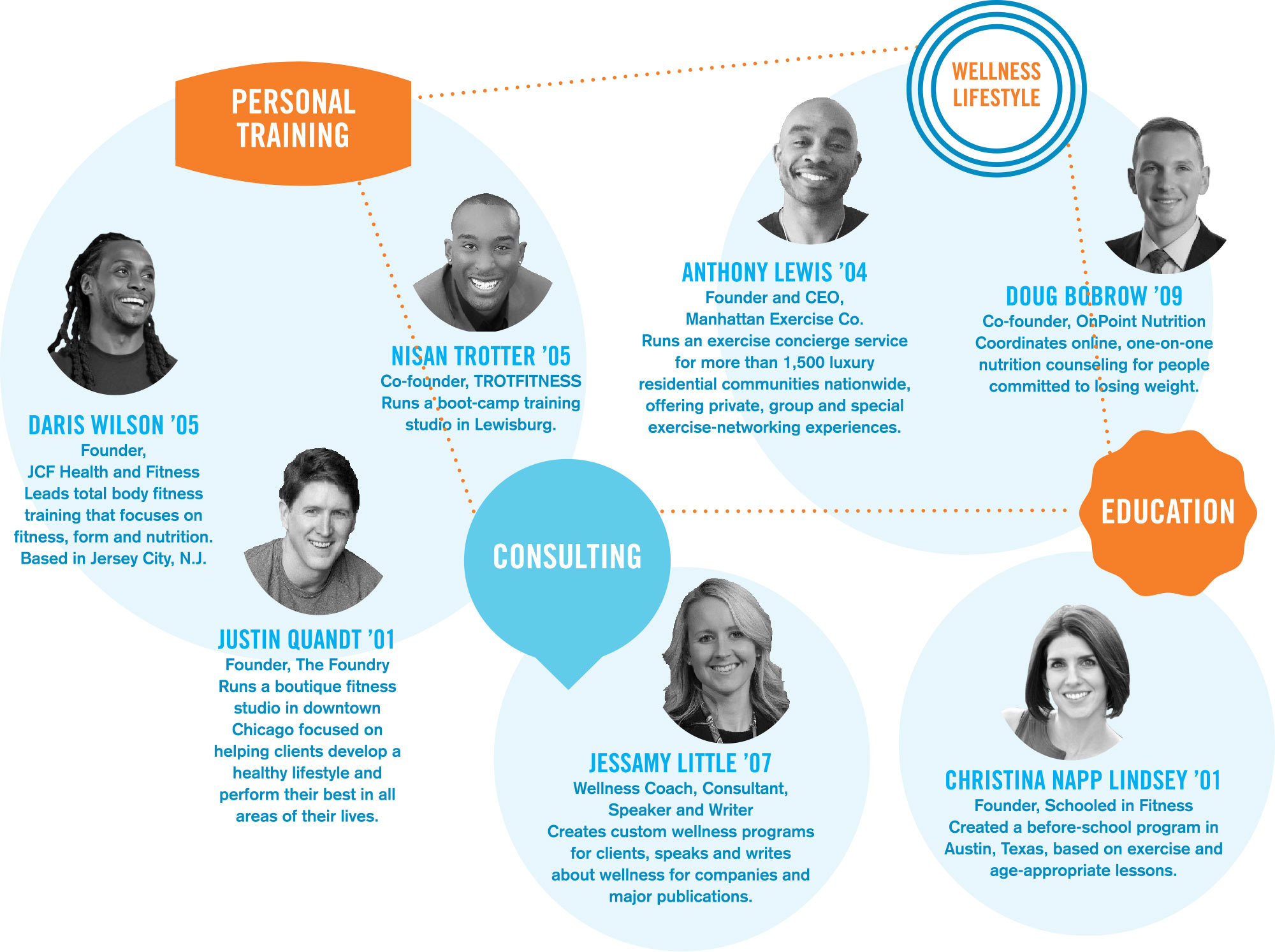
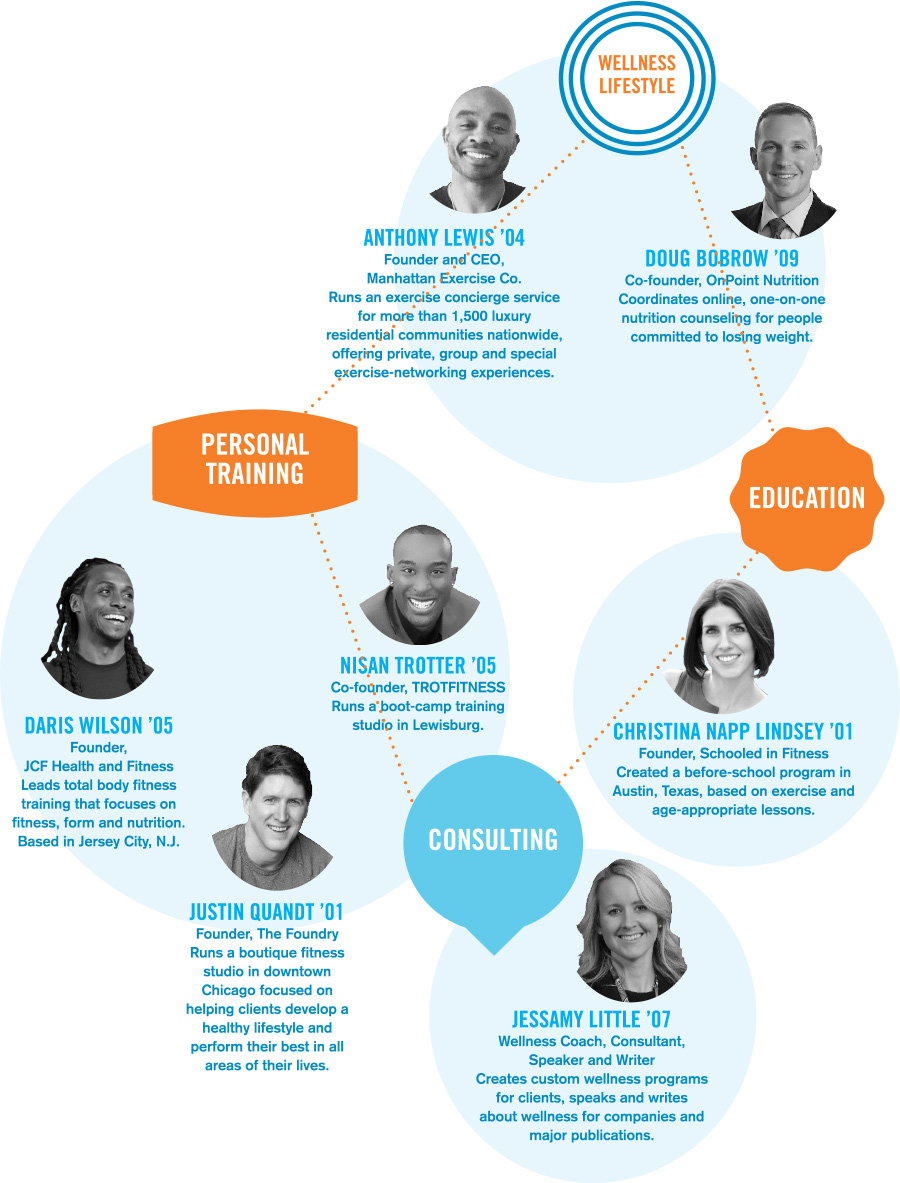
My brother’s care took up most of my mother’s time, even after he no longer needed to be fed and changed. Family outings were adapted to his needs, delayed as we waited for him to get ready or cut short when he tired.
Conversations ceased if he spoke any words, though he never had much to say. But leaving him behind or not listening to him wasn’t an option. Like many older siblings, I viewed my brother as being slow, boring and often in the way. But he was my brother, no matter how much extra time he needed.
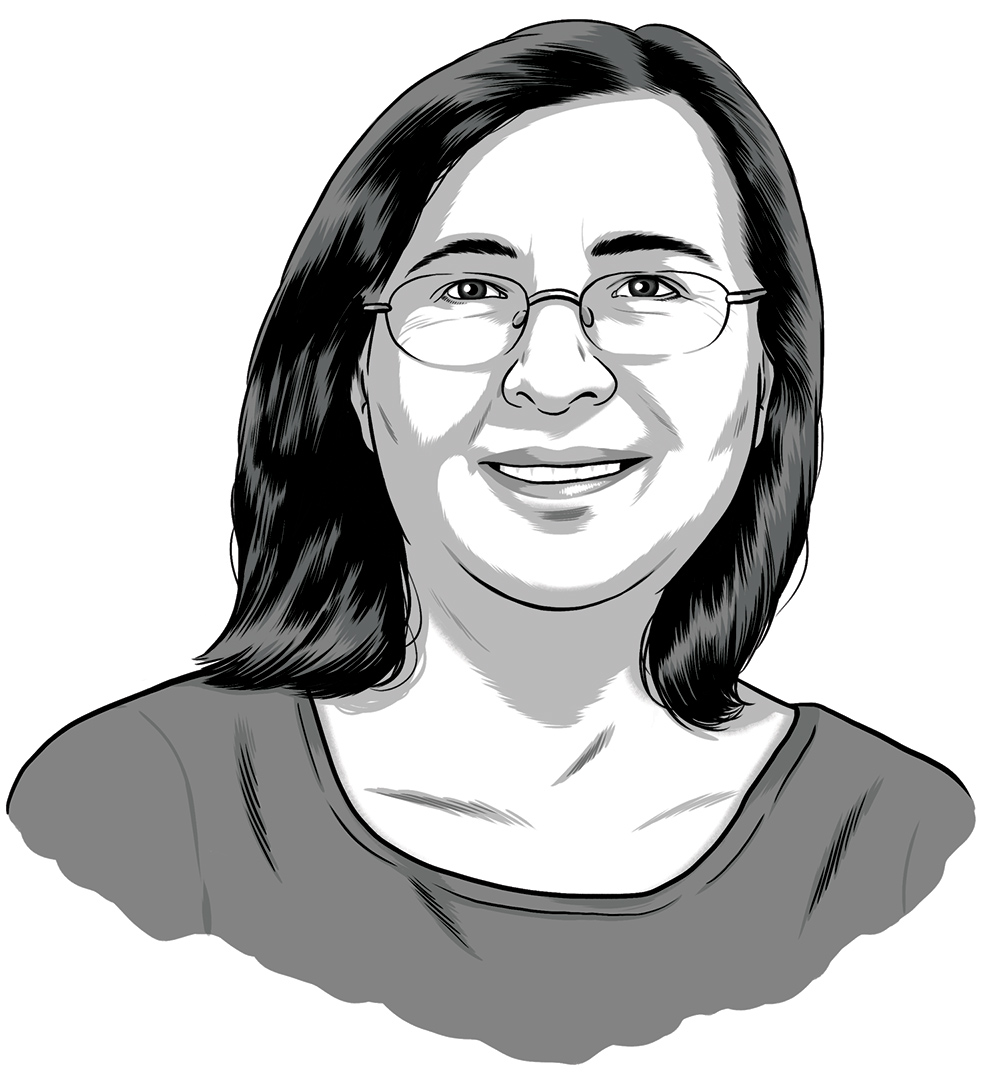
Lonzer’s fears turned out to be misplaced. After earning a B.S. in biology, then an M.D. from Penn State, she became a pediatrician and hospital executive with the world-renowned Cleveland Clinic (CC). After years of building up CC’s pediatric operations in suburban Cleveland, Lonzer was elected president of the medical staff of CC and, in 2010, to a five-year term on CC’s board of governors at a time when few women were on the board.
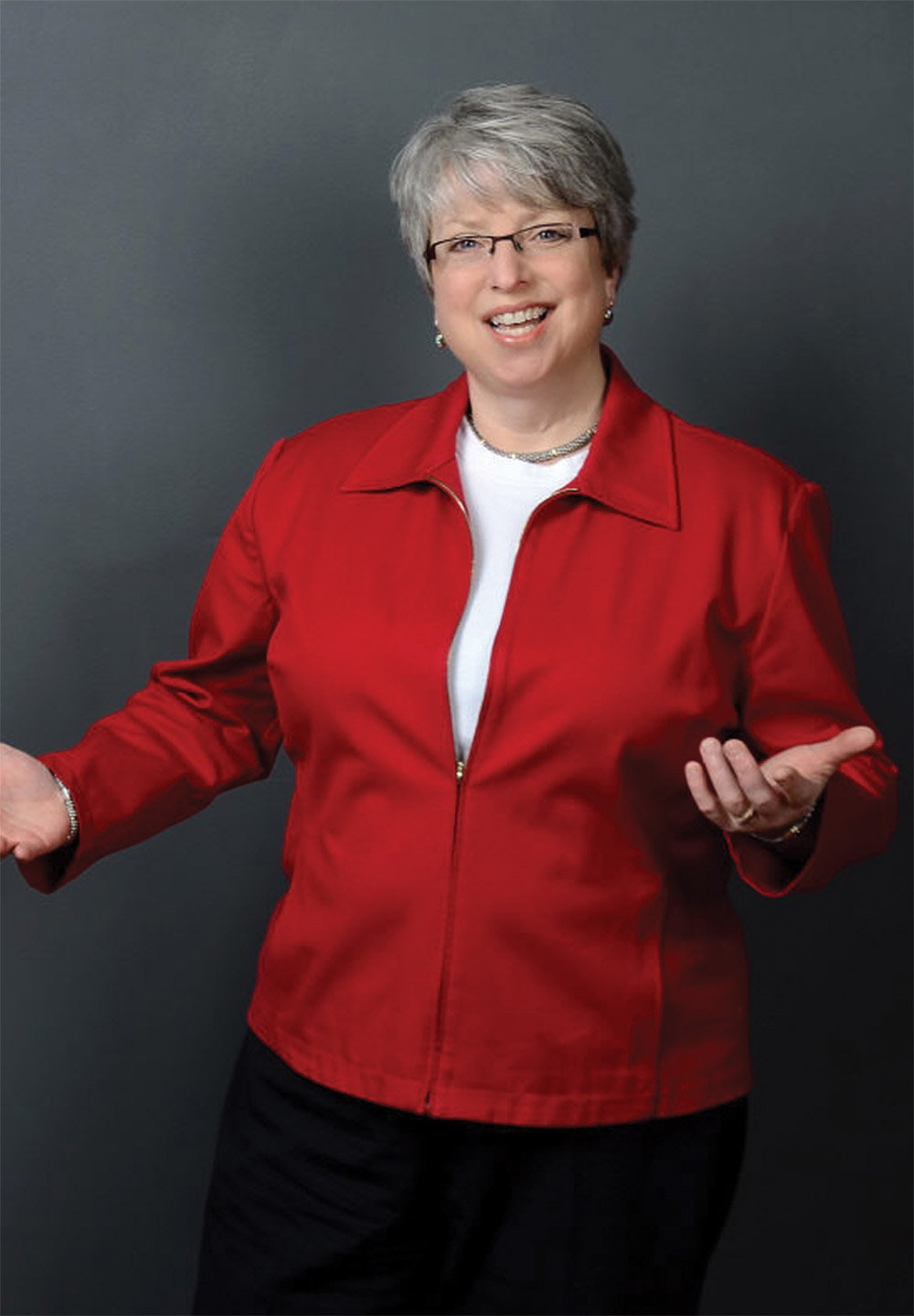

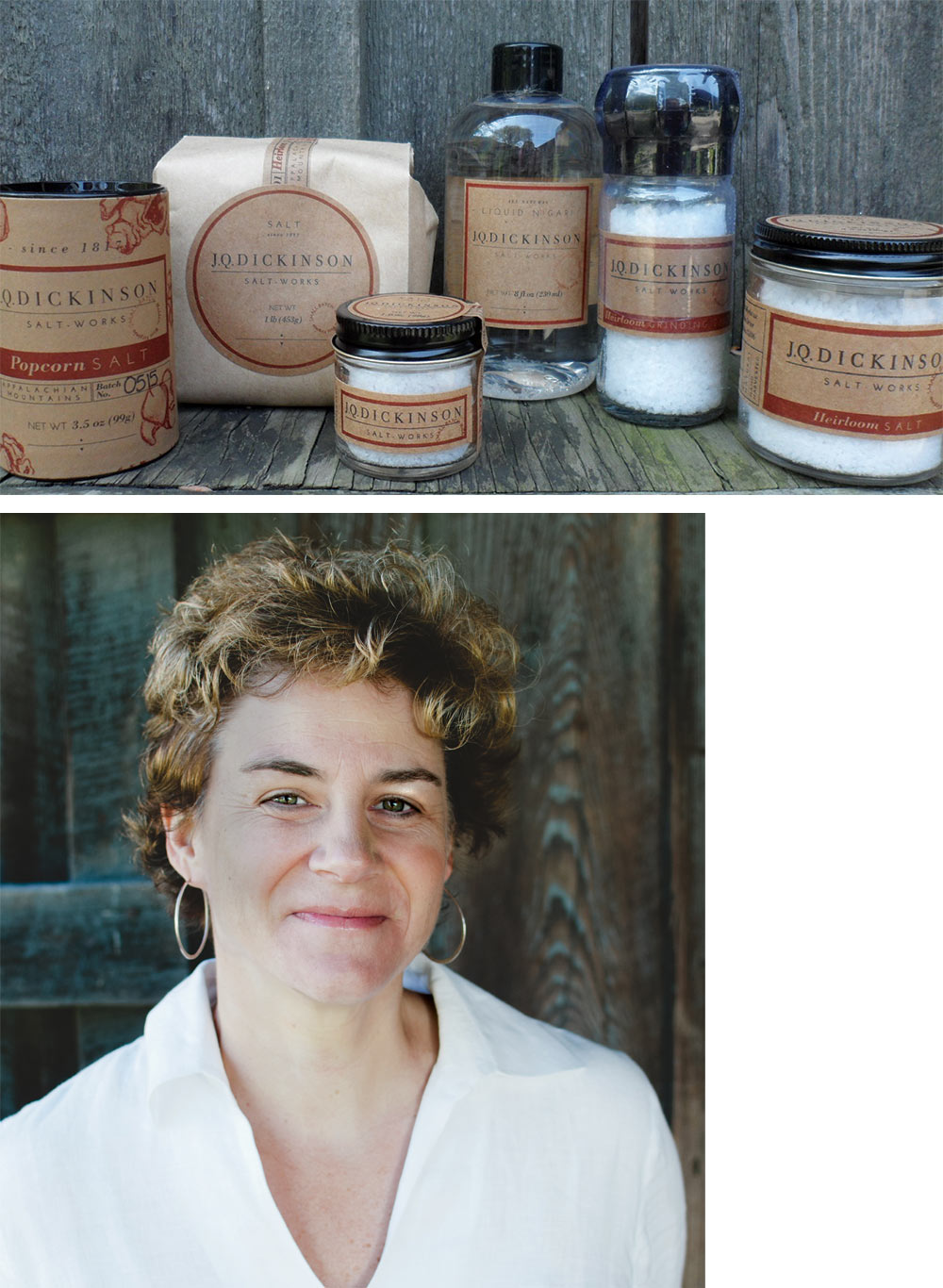

Bruns’ ancestor began producing salt in West Virginia’s Kanawha Valley 200 years ago. A fire contributed to the company’s demise in 1945, but the land has remained with her family for seven generations. In 2013, Bruns and her brother, Lewis Payne, revived the salt works as a producer of fine, handcrafted, sustainably sourced salt.
“Chefs really like our salt as a finishing salt,” Bruns says. “The texture holds up on dishes, but it’s not too hard — it crunches in your mouth easily.”
The company produced 16,000 pounds of salt in 2017, more than five times its initial year’s volume, and the business continues to grow, with the salt used or sold at 600 restaurants and stores nationwide, as well as through jqdsalt.com.
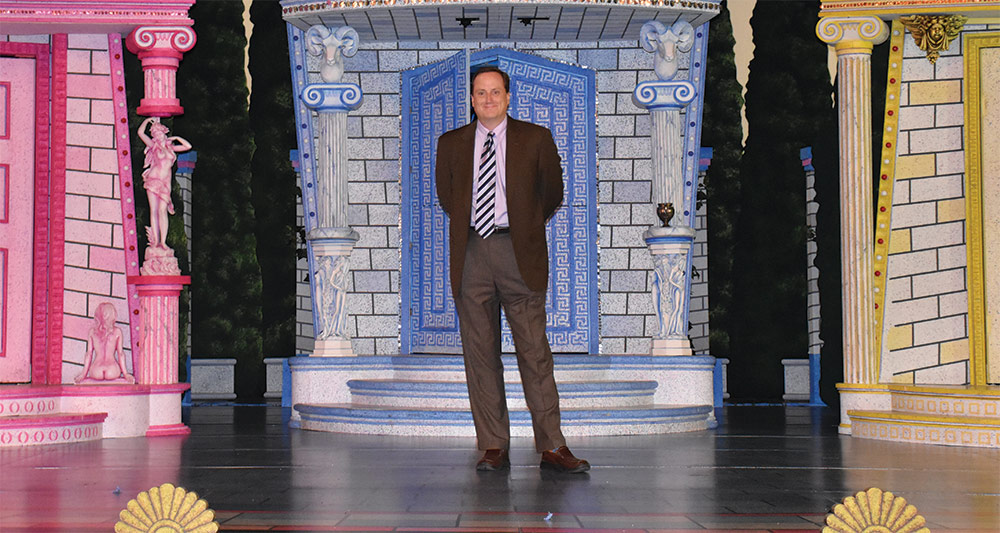
It drew the attention of Philadelphia’s Walnut Street Theatre, which claims to be the oldest continuously operating theatre in the English-speaking world. Quinn had an acting apprenticeship there after Bucknell, where he majored in political science and theatre. He eventually got a job at Walnut Street, and for the last seven years has been the theatre’s director of education.
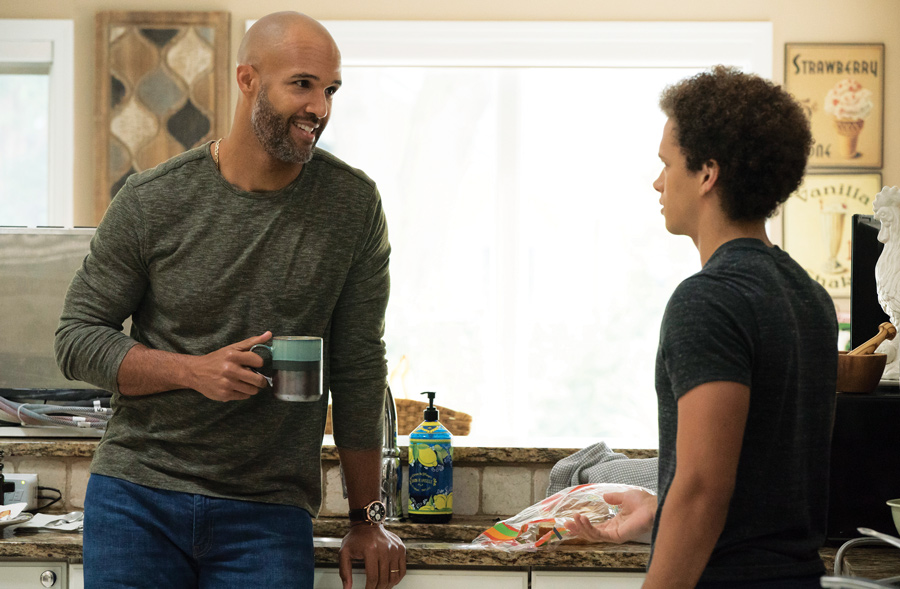
Tallman plays Detrell Thorne, father of the lead character, Robbie, who is the star quarterback at his high school. “It’s based on a true story in a small town in Pennsylvania — a football town,” Tallman says.
Corwin Beam, Dec. 10, Stuart, Fla.
B. Ruth Egee Dinsmore P’67, P’71, Aug. 23, Riverton, N.J.
Marian Weinberger Hartman, Dec. 26, Medford, N.J.
Marion McConnell McCormick, Jan. 11, Bel Air, Md.
Marlin Sheridan, Sept. 2, Coldspring, Texas
Dorothy Ashman Fackre, Oct. 13, Oregon City, Ore.
Joy Schultz Tomaino, Jan. 11, Pottsville, Pa.
Karin Nelson Truesdale, Jan. 20, Bethesda, Md.
Jane Redsecker Menzie, Oct. 17, Norman, Okla.
Wilda Metzger Goering, Dec. 8, Goshen, Ind.
William Hoeveler, Nov. 18, Miami, Fla.
Jean Steele Iba, Aug. 7, Hershey, Pa.
June Stott Matthews P’84, Dec. 27, Maysville, Ky.
Richard Rowe, Jan. 6, Lewisburg, Pa.
Robert Johnson, Oct. 15, Pottsville, Pa.
Doris Strassner Marino, Dec. 8, Lewisburg, Pa.
Marjorie Walter Sinclair, Oct. 30, Worcester, Mass.
Henry Wilson, Oct. 18, Woburn, Mass.
Fell graduated from Williams College, then attended Union Theological Seminary in Manhattan, but he left the ministry in 1954 as his thoughts turned increasingly toward the study of philosophy. After serving in the Army for two years in Hawaii, he returned to New York City to earn his doctorate at Columbia University.
Fell joined the Bucknell faculty in 1963. He was a Presidential Professor of Philosophy from 1987 until 1992 and retired in 1993 as the John Howard Harris Chair in Philosophy, emeritus. He published several books on Sartre and Heidegger and inspired lifelong connections with generations of students.
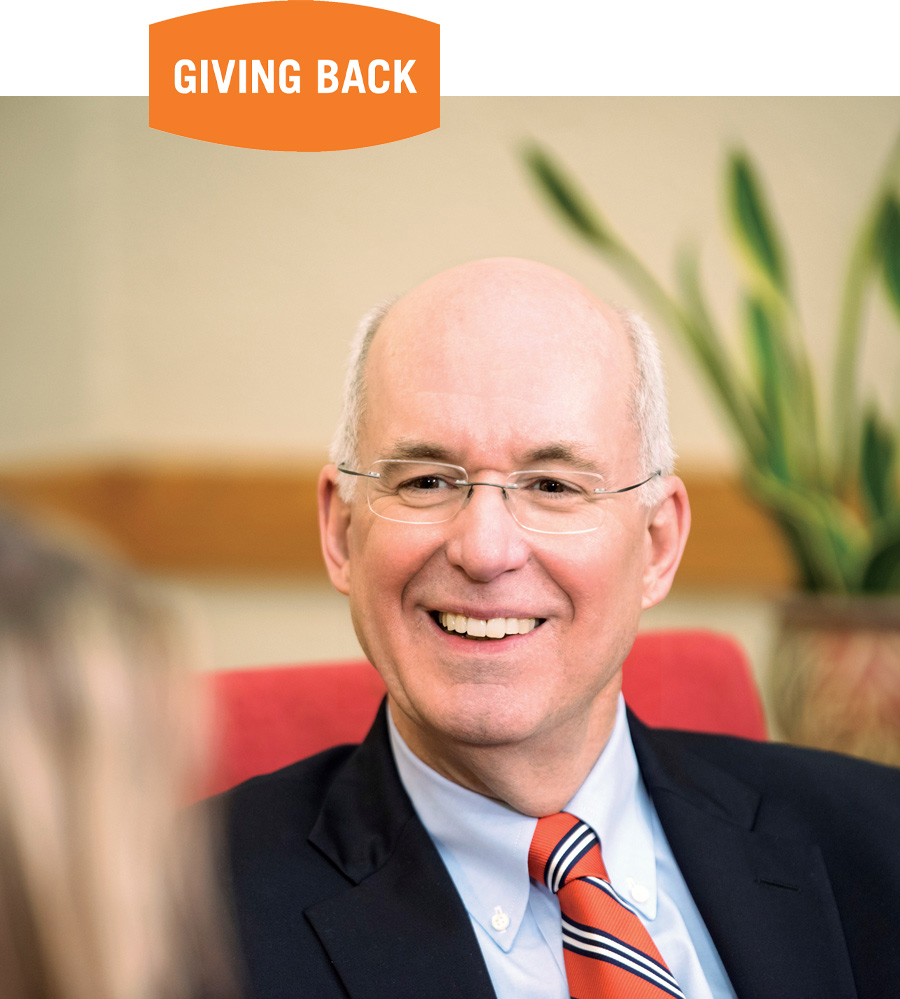

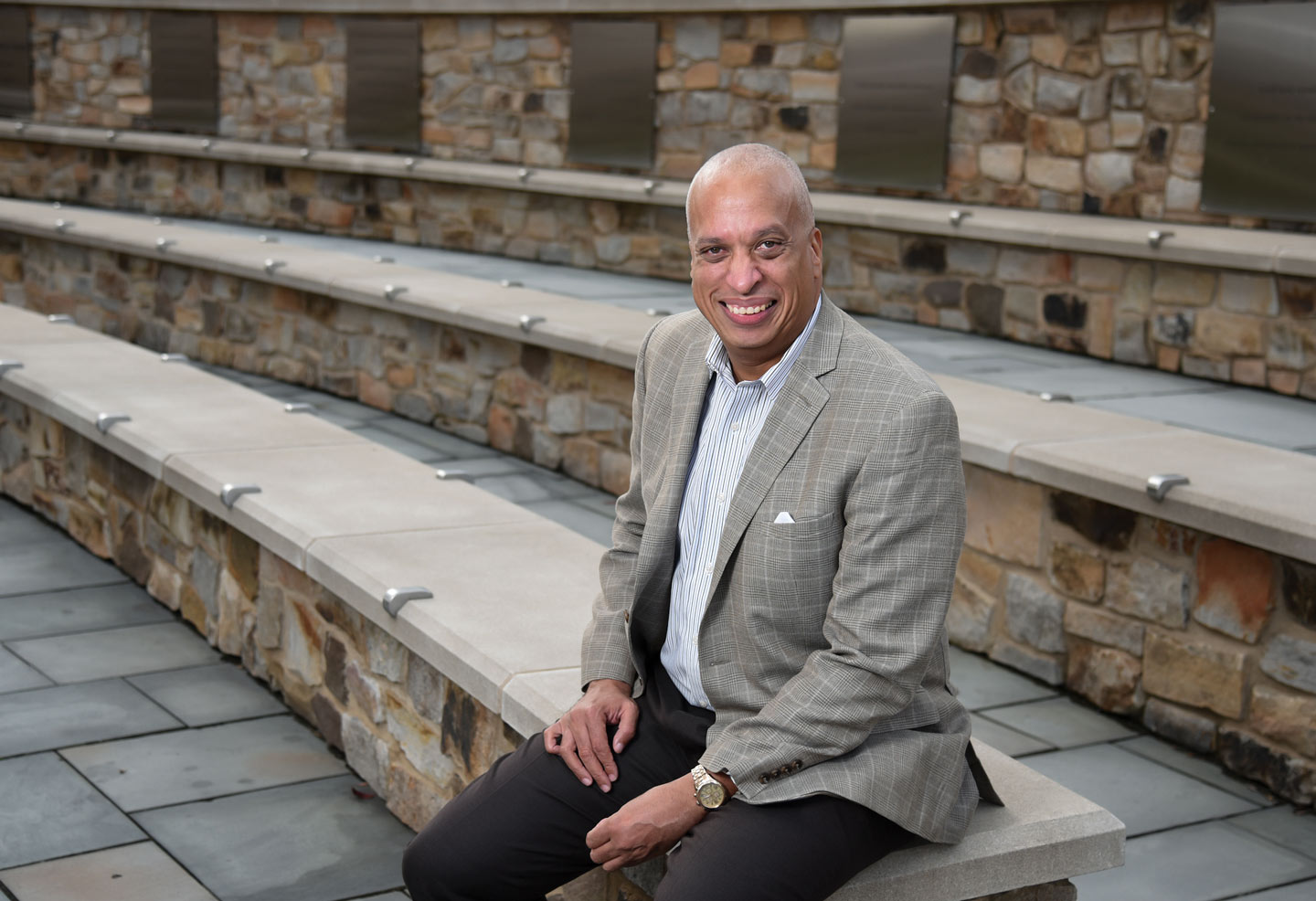
However, Davis, who rose from what he describes as a “rough side” of Washington, D.C., to leadership roles at Fortune 500 companies before launching his own successful business, is also committed to smoothing the path for future generations of Bucknell students.
A recent $5 million gift from Davis will be used for construction on campus and to support diversity initiatives, which are close to Davis’ heart.
“My freshman roommate and I were two of only perhaps six African-American electrical engineering majors who graduated from Bucknell over a 10-year period,” recalls Davis, who, with a partner, started the Birmingham, Ala.-based Horizon Group in 2001. “My first two years at Bucknell were very challenging but very rewarding. The attrition rate for engineers overall was significant. I was one of the few people who stuck with it.”

 WHEREFORE THE 401K
WHEREFORE THE 401K

WHAT’S YOUR FAVORITE BUCKNELL MUSICAL MEMORY?
FOLLOW US ON FACEBOOK TO SUBMIT YOUR ANSWER

 See you at Reunion!
See you at Reunion!
on the go
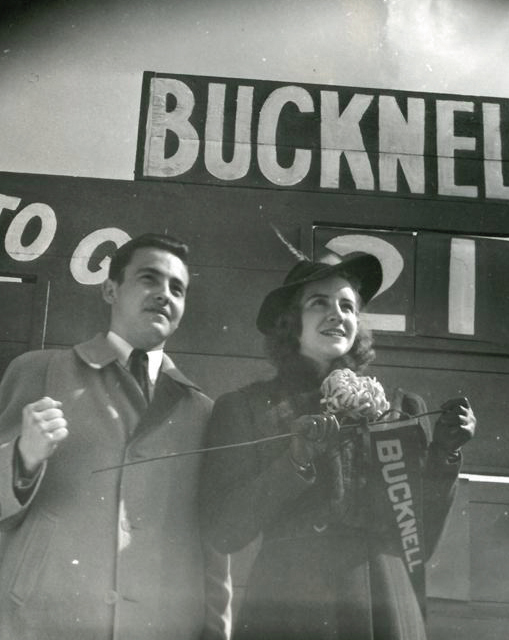

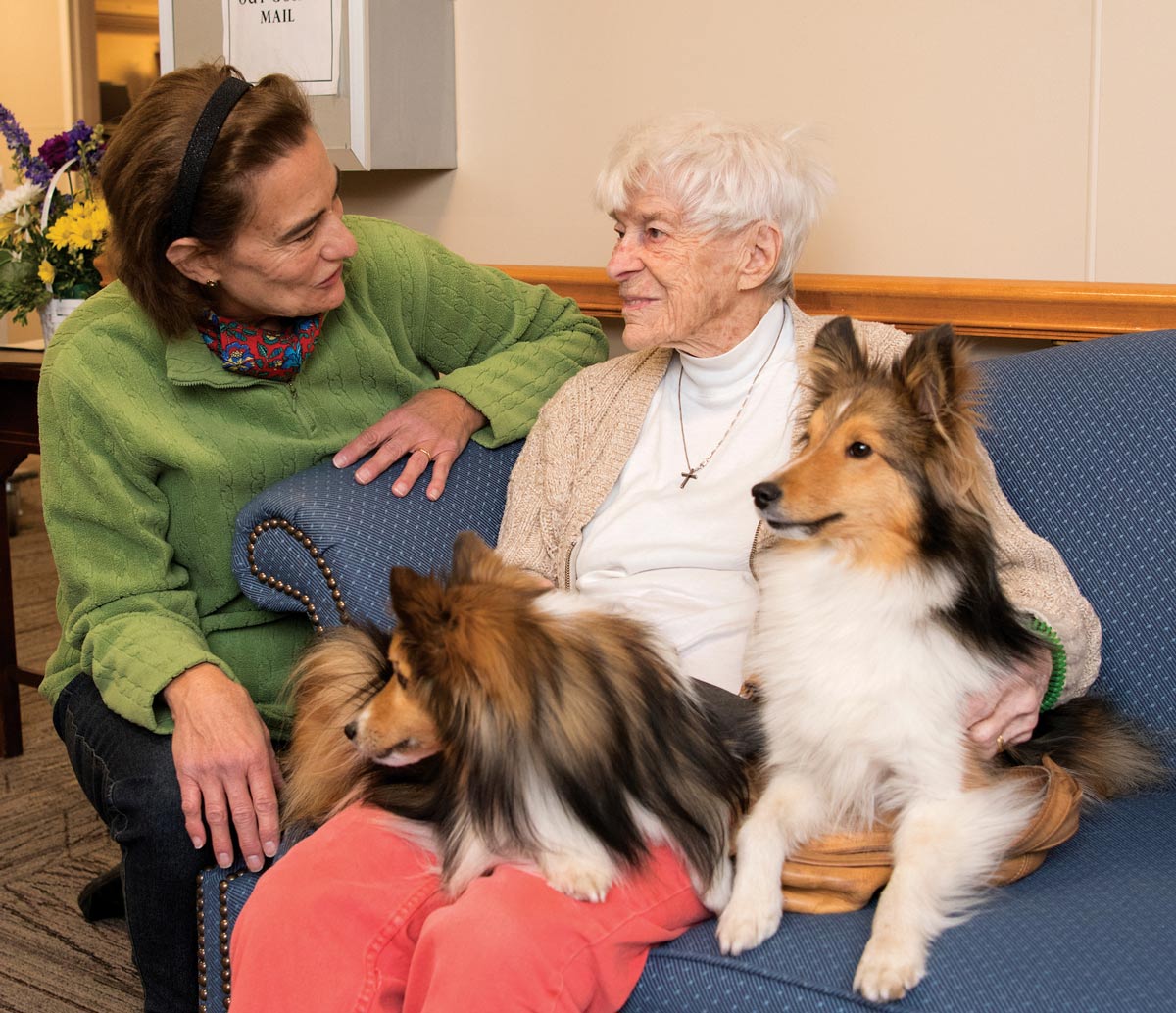

 NANCY HAUPT P’09 has been processing book acquisitions in Bertrand Library since 2001. Professors used to meet with her to discuss requests, but now most of her interactions are online. But in her avocation, dog trainer, she’s highly visible at local prisons, hospitals, hospices, universities, nursing homes and libraries, with her sable Shelties, Kona and Cedar, performing tricks galore.
NANCY HAUPT P’09 has been processing book acquisitions in Bertrand Library since 2001. Professors used to meet with her to discuss requests, but now most of her interactions are online. But in her avocation, dog trainer, she’s highly visible at local prisons, hospitals, hospices, universities, nursing homes and libraries, with her sable Shelties, Kona and Cedar, performing tricks galore.